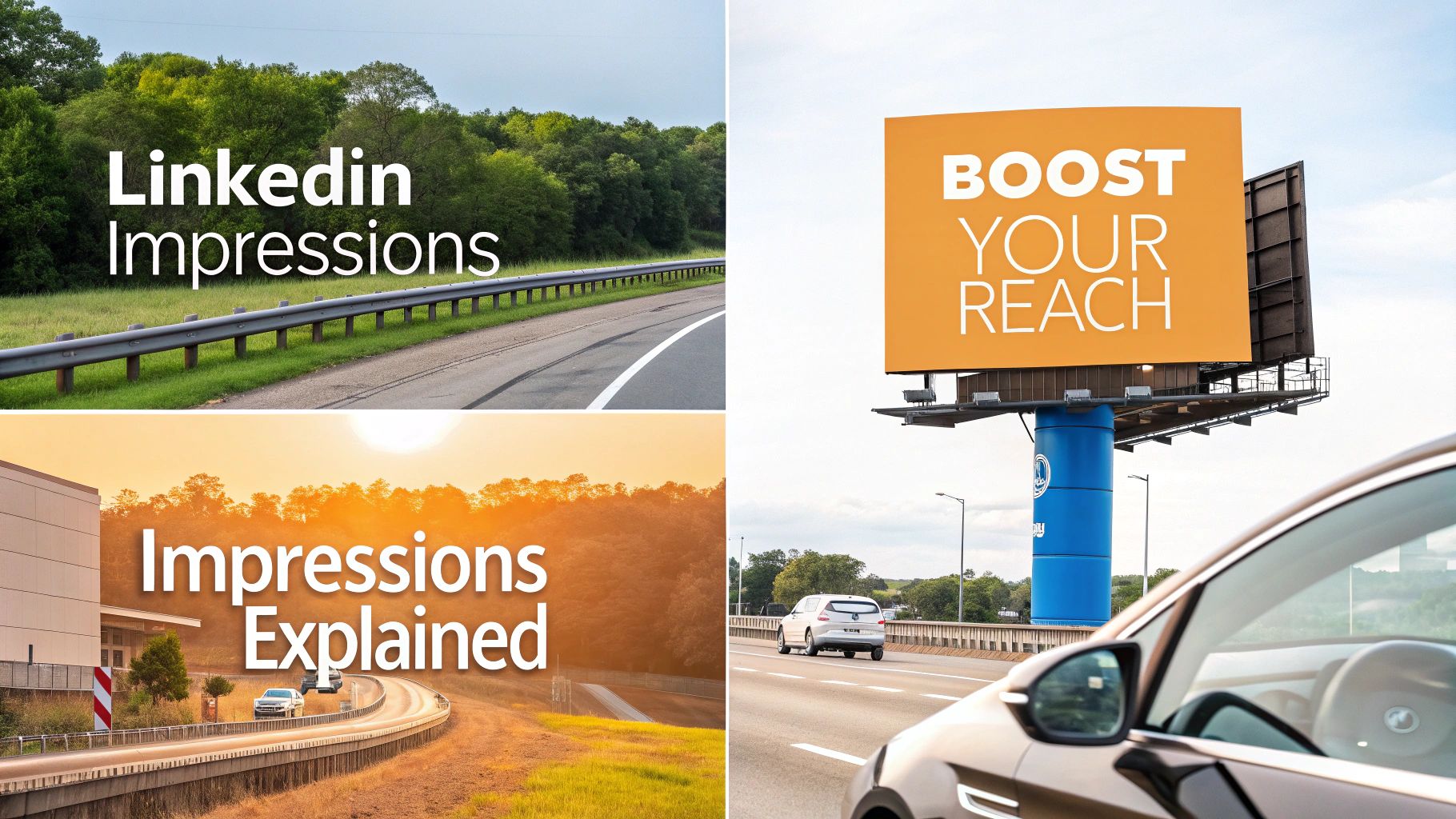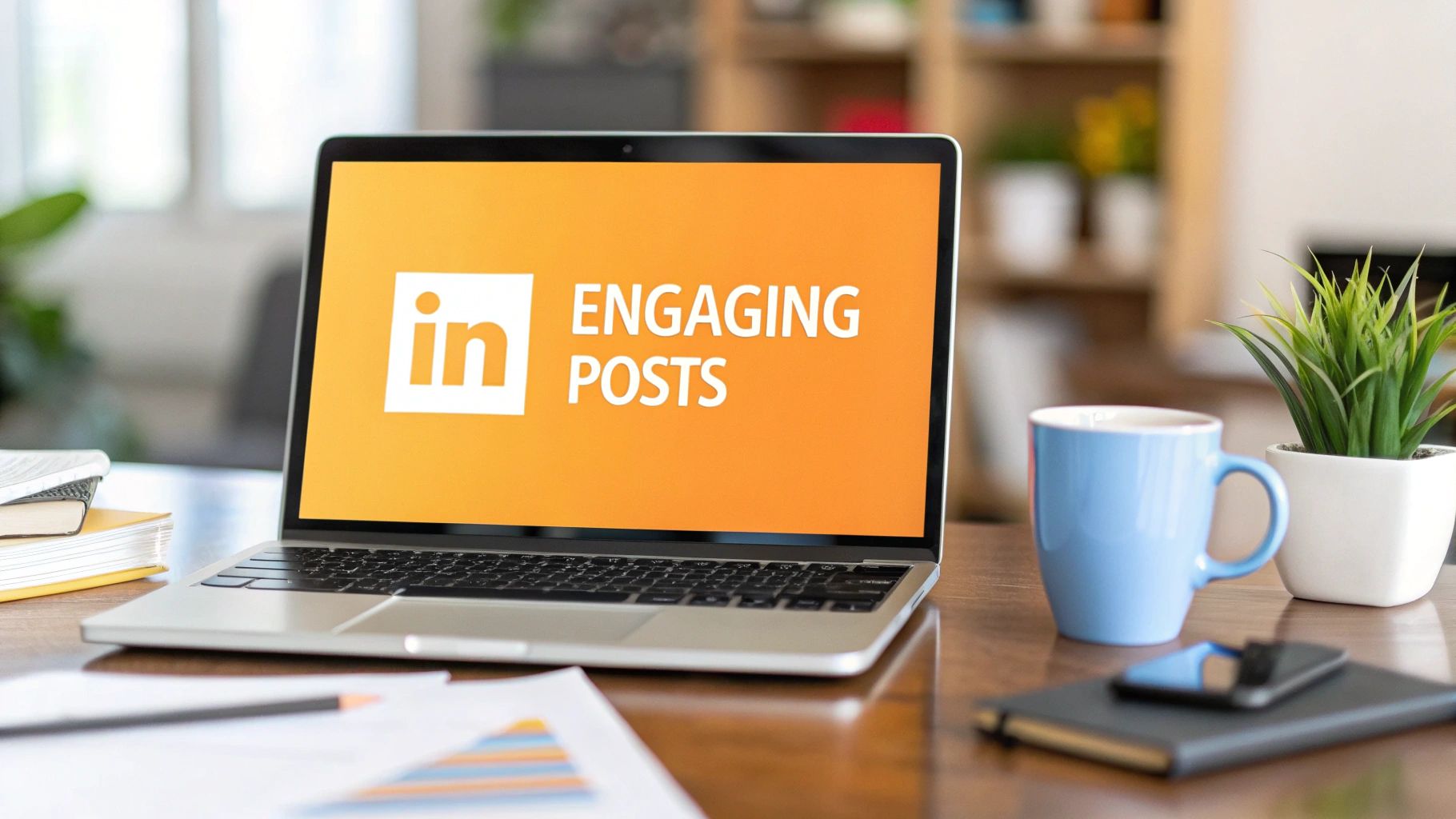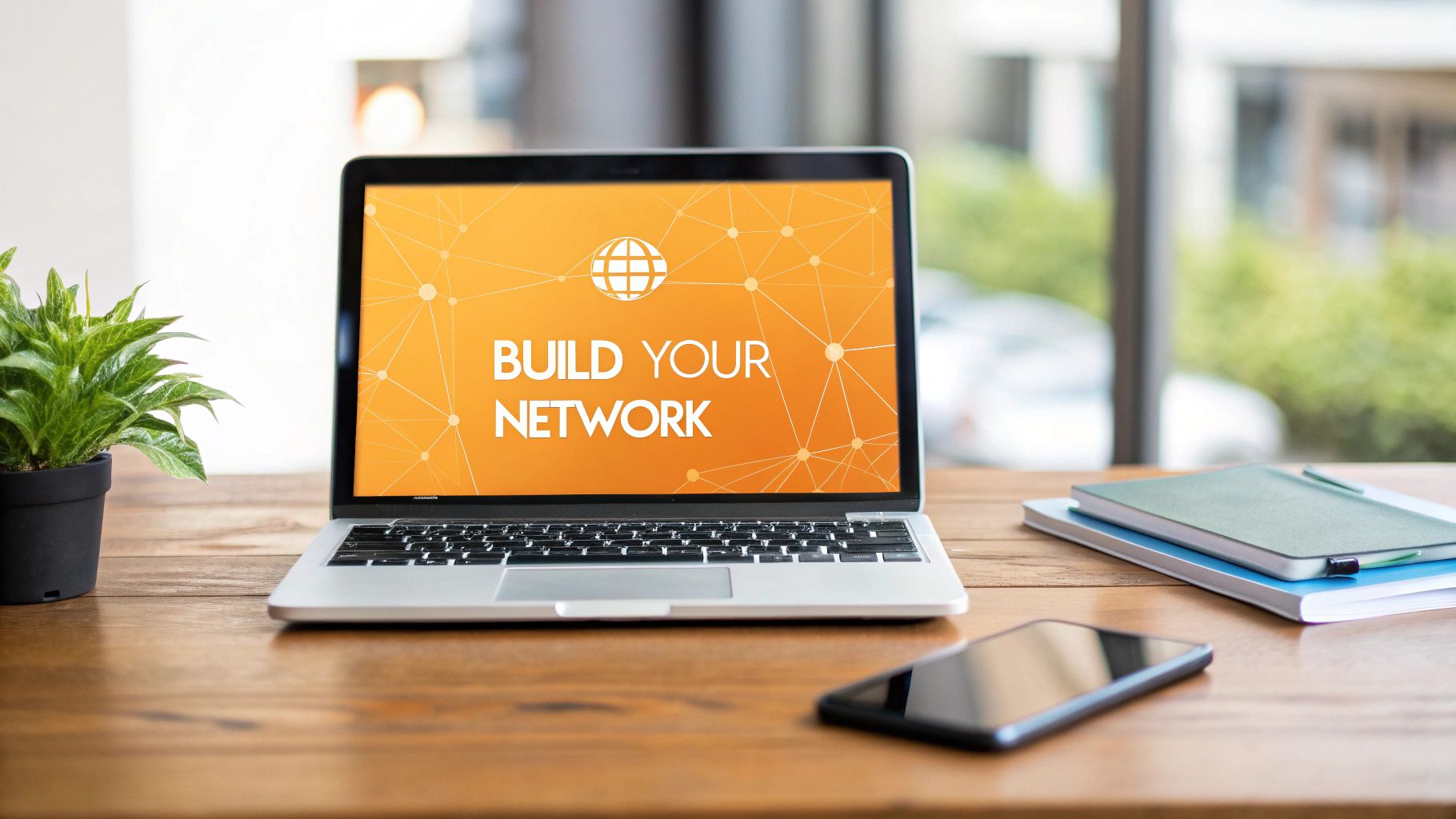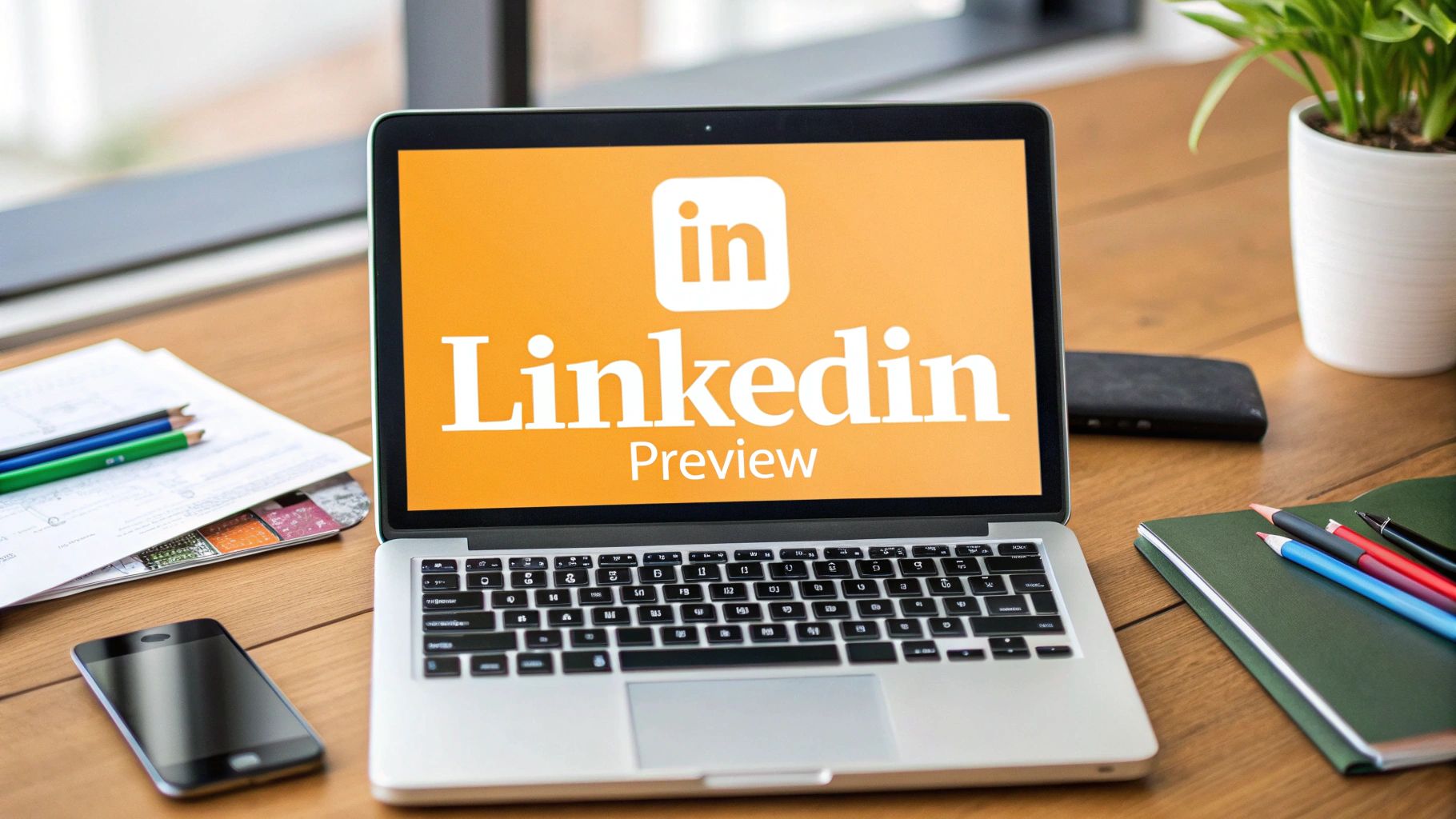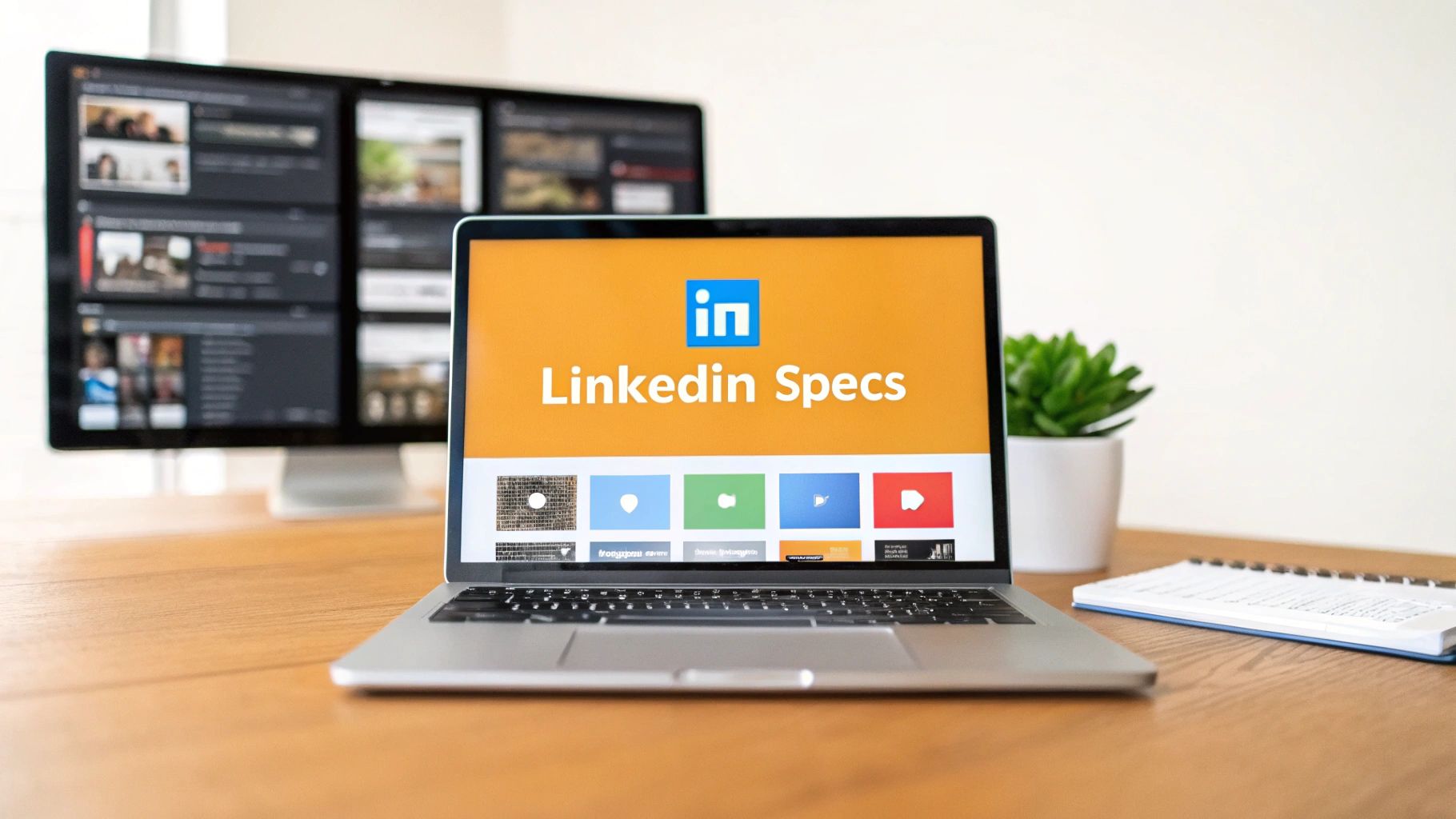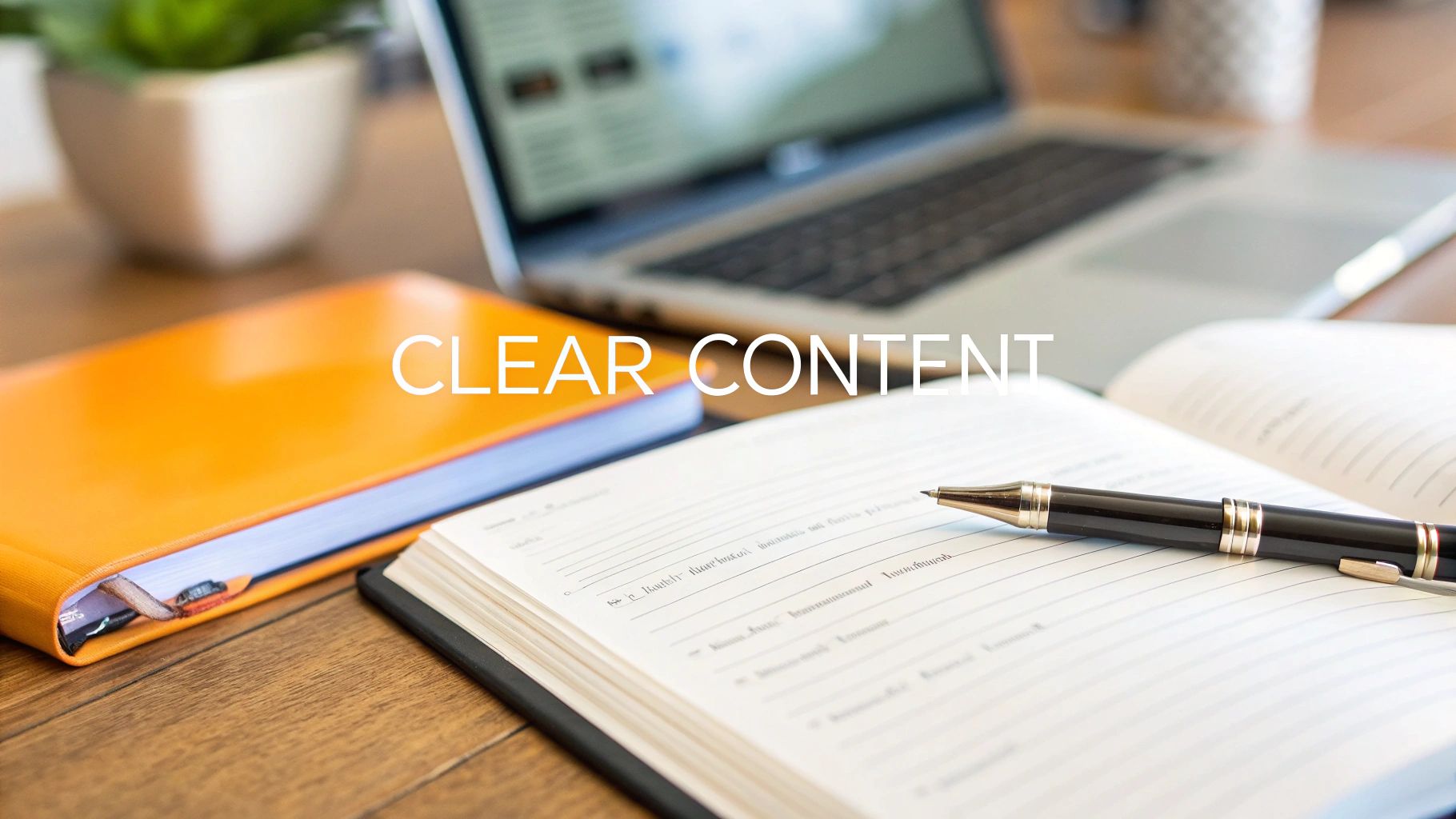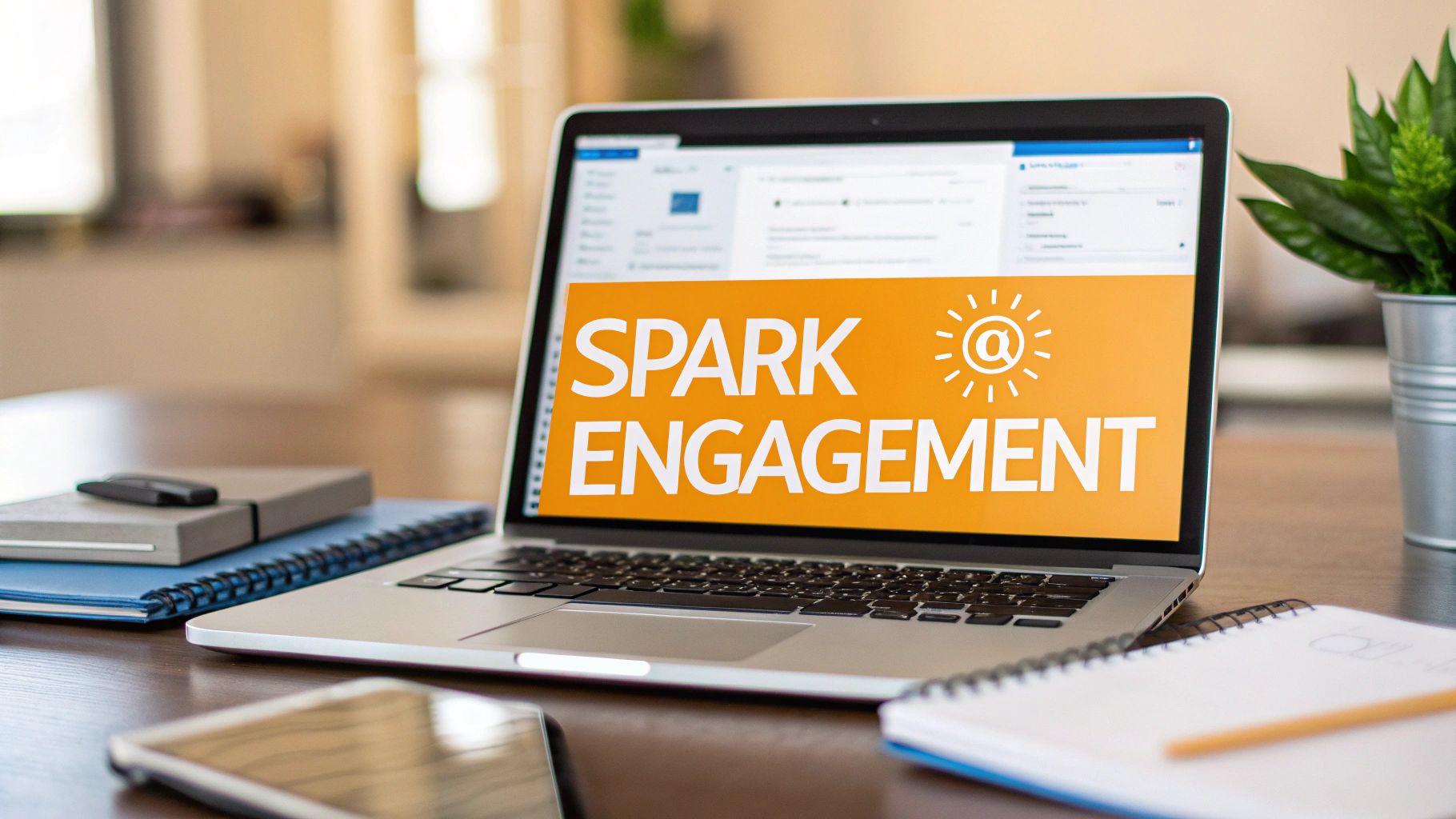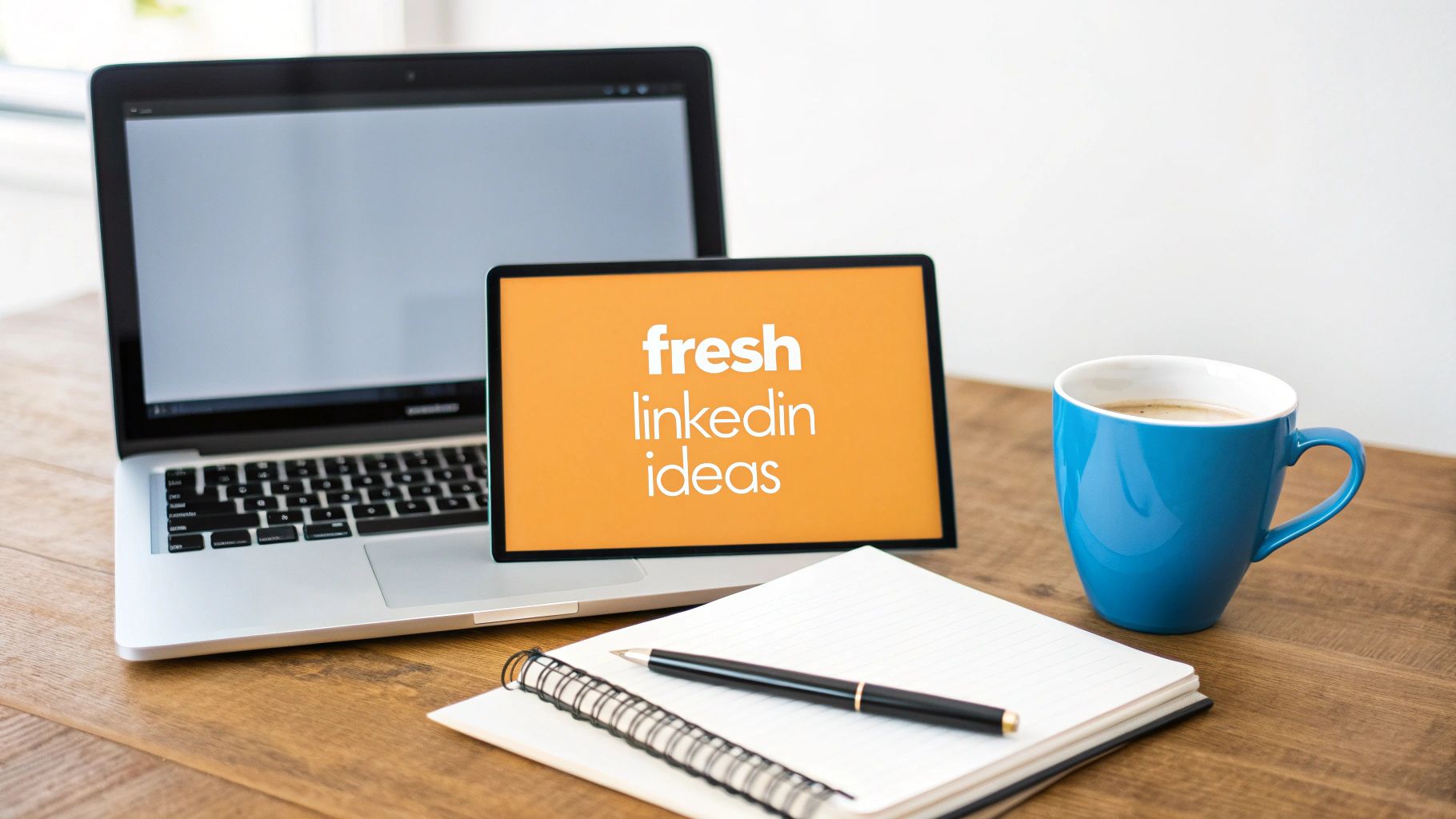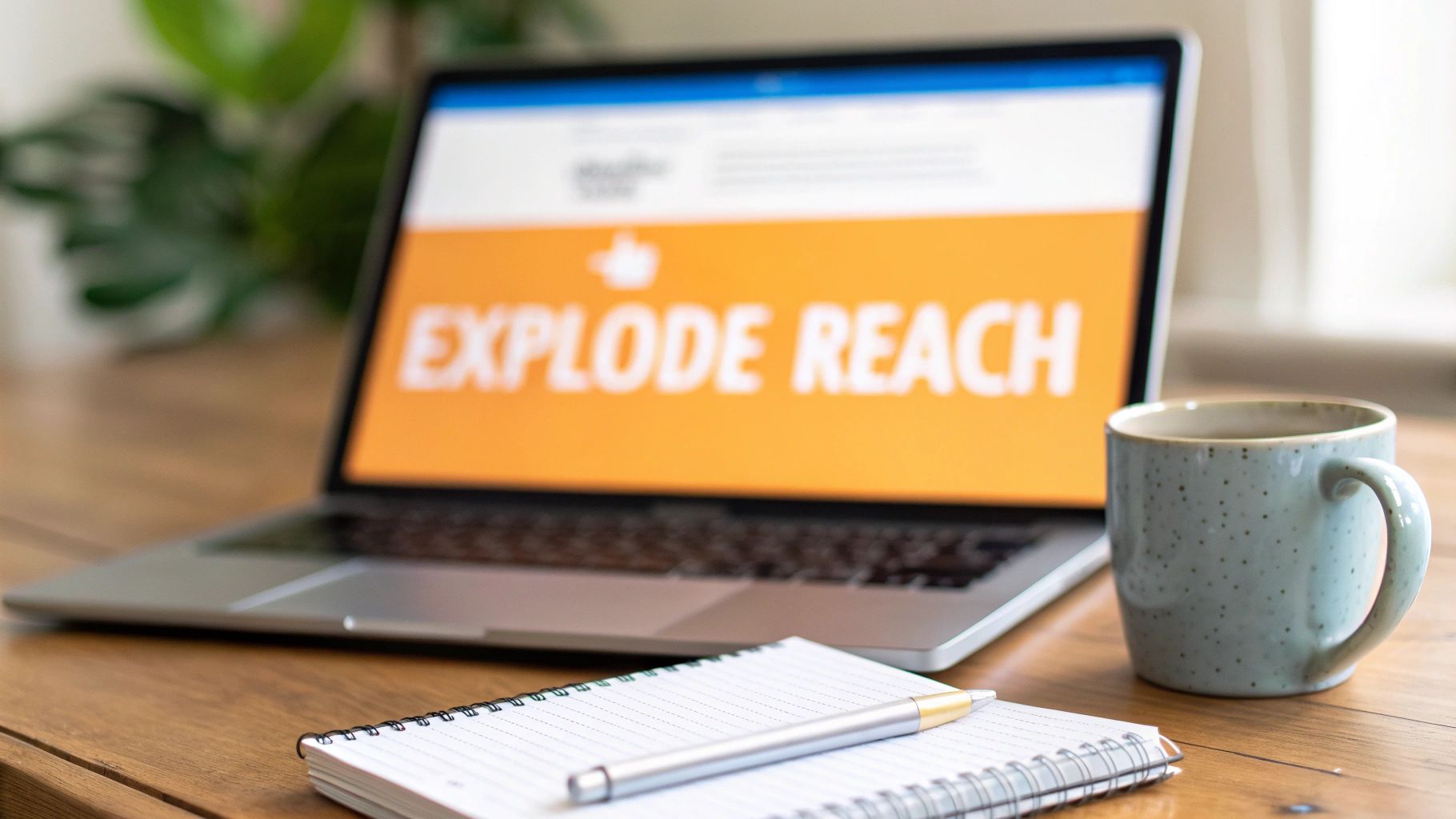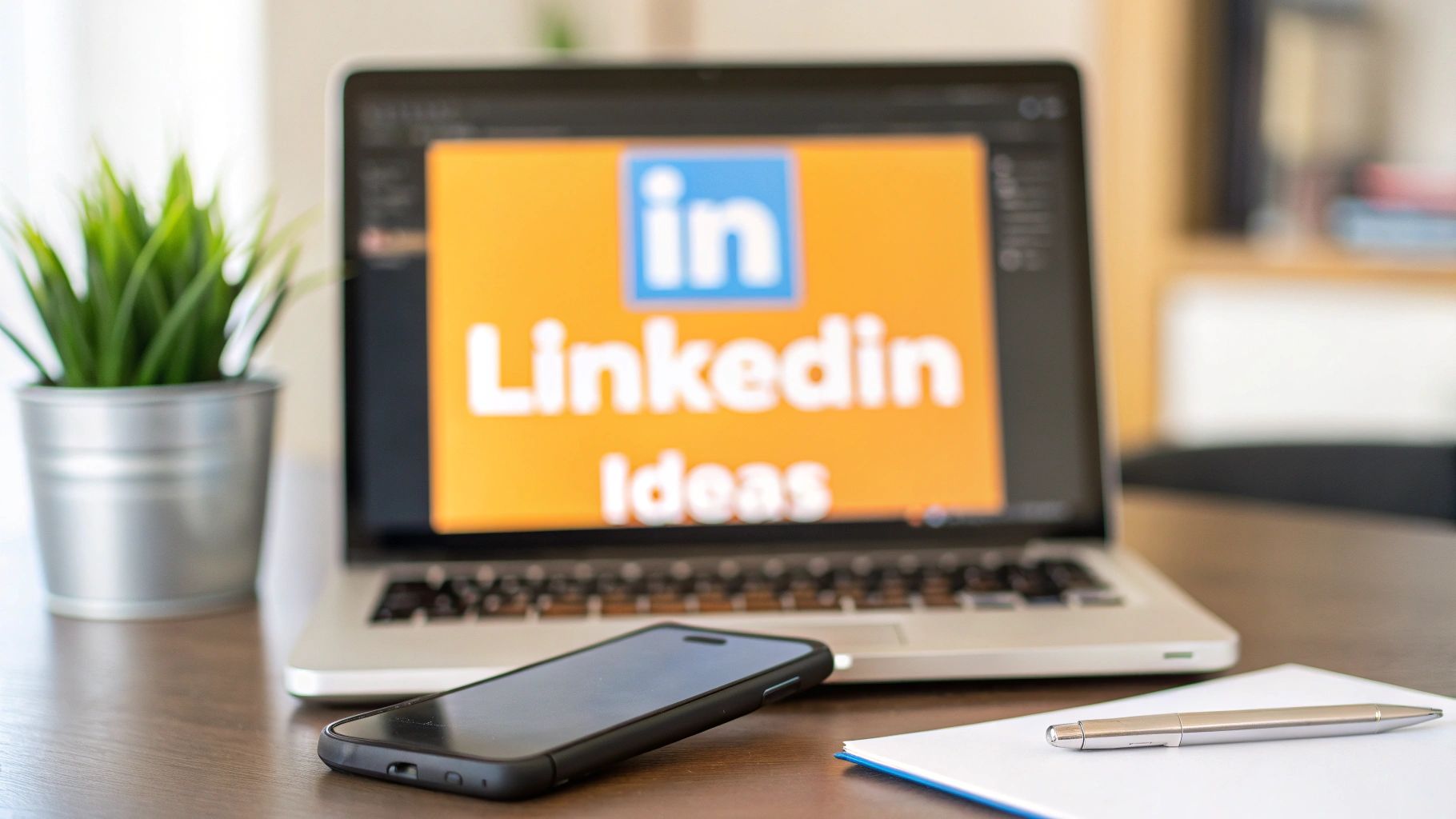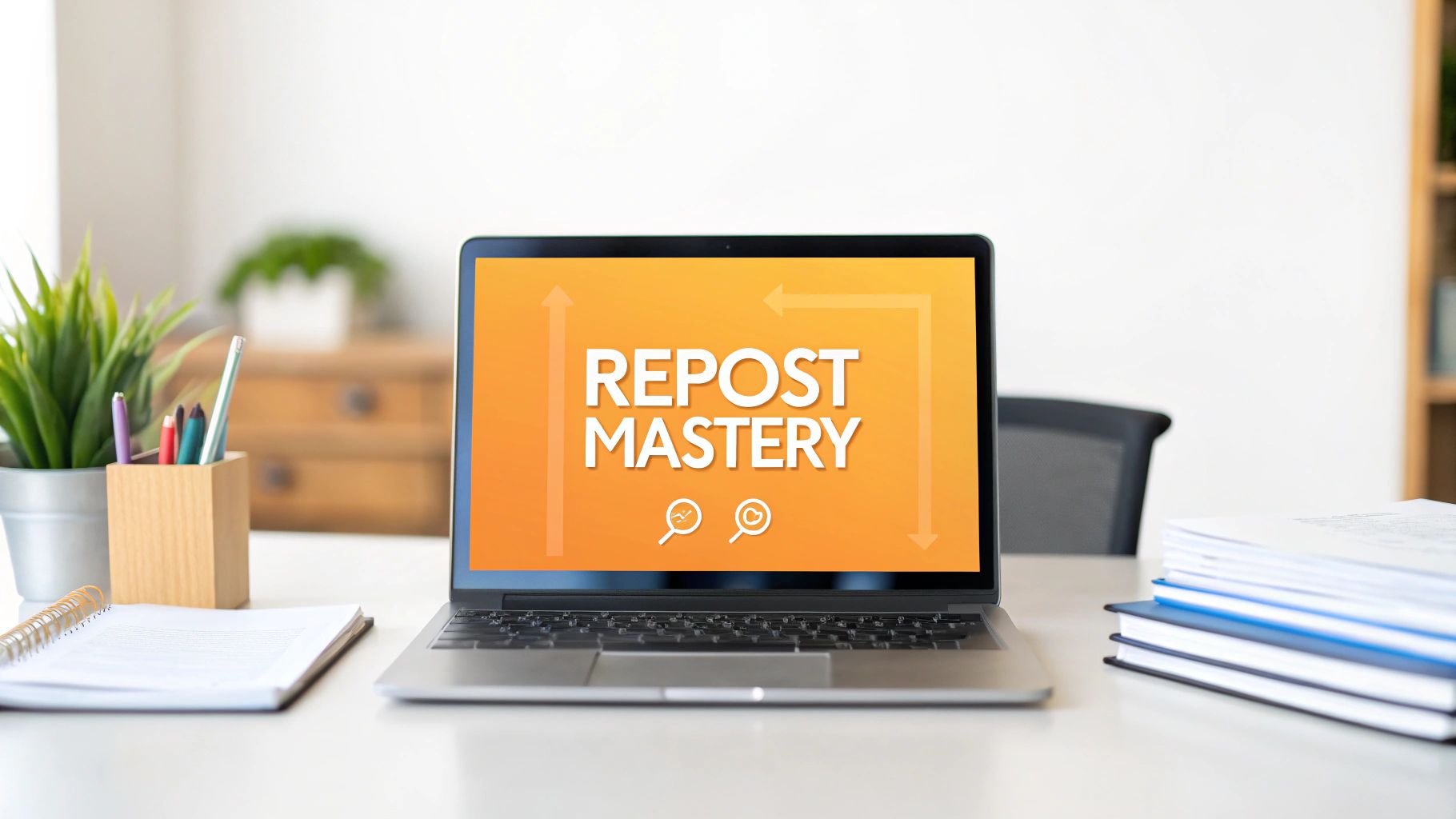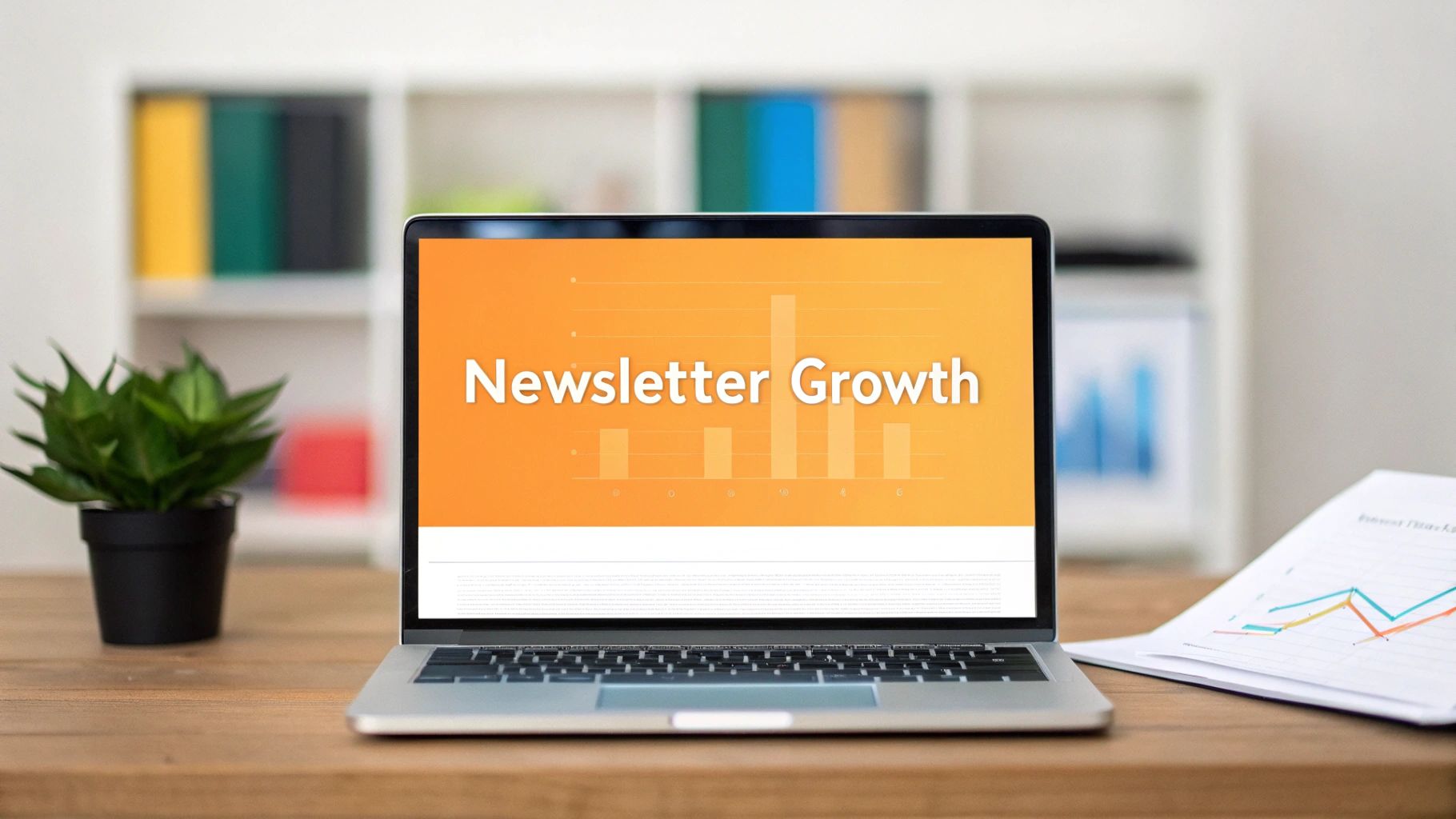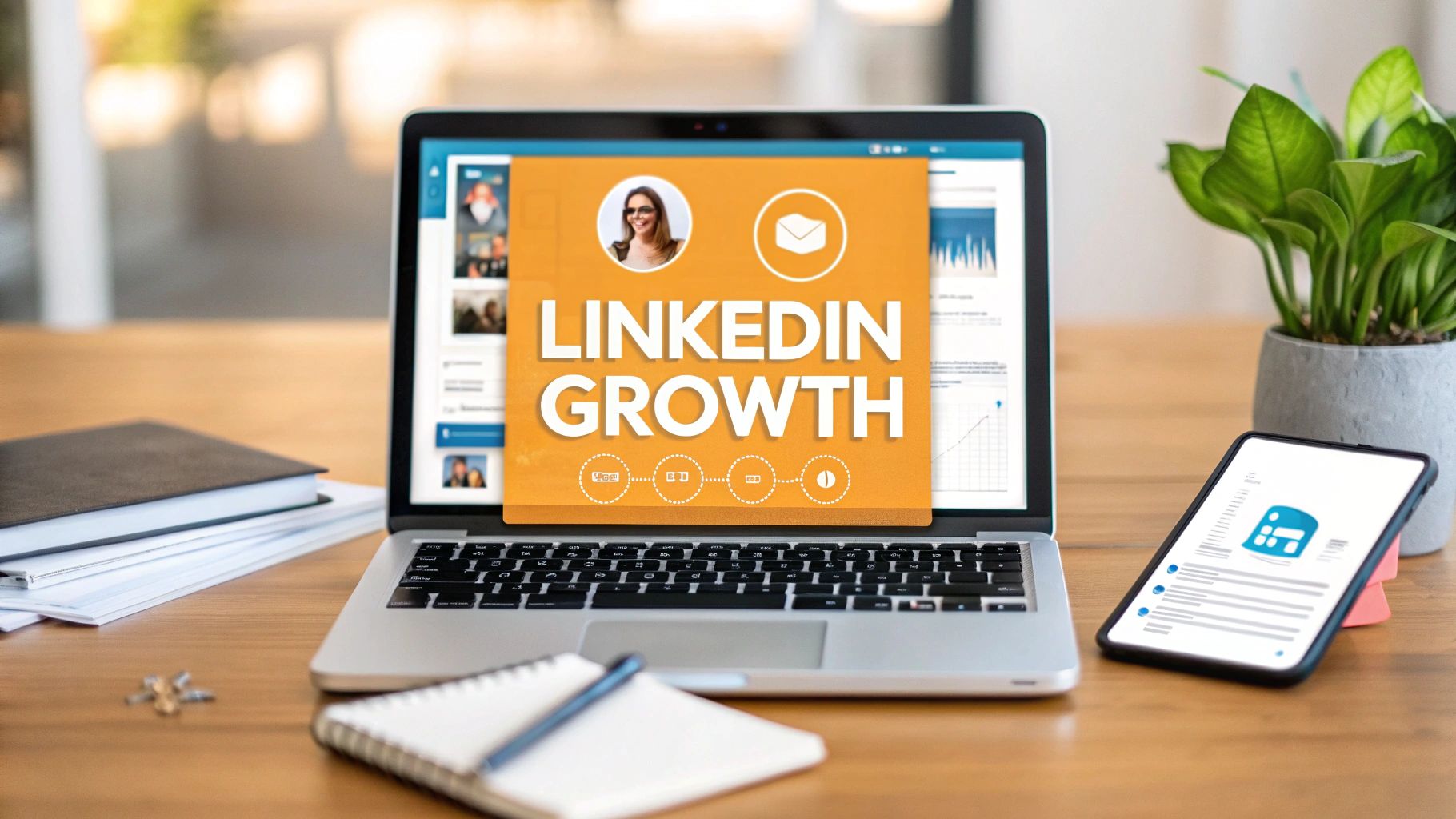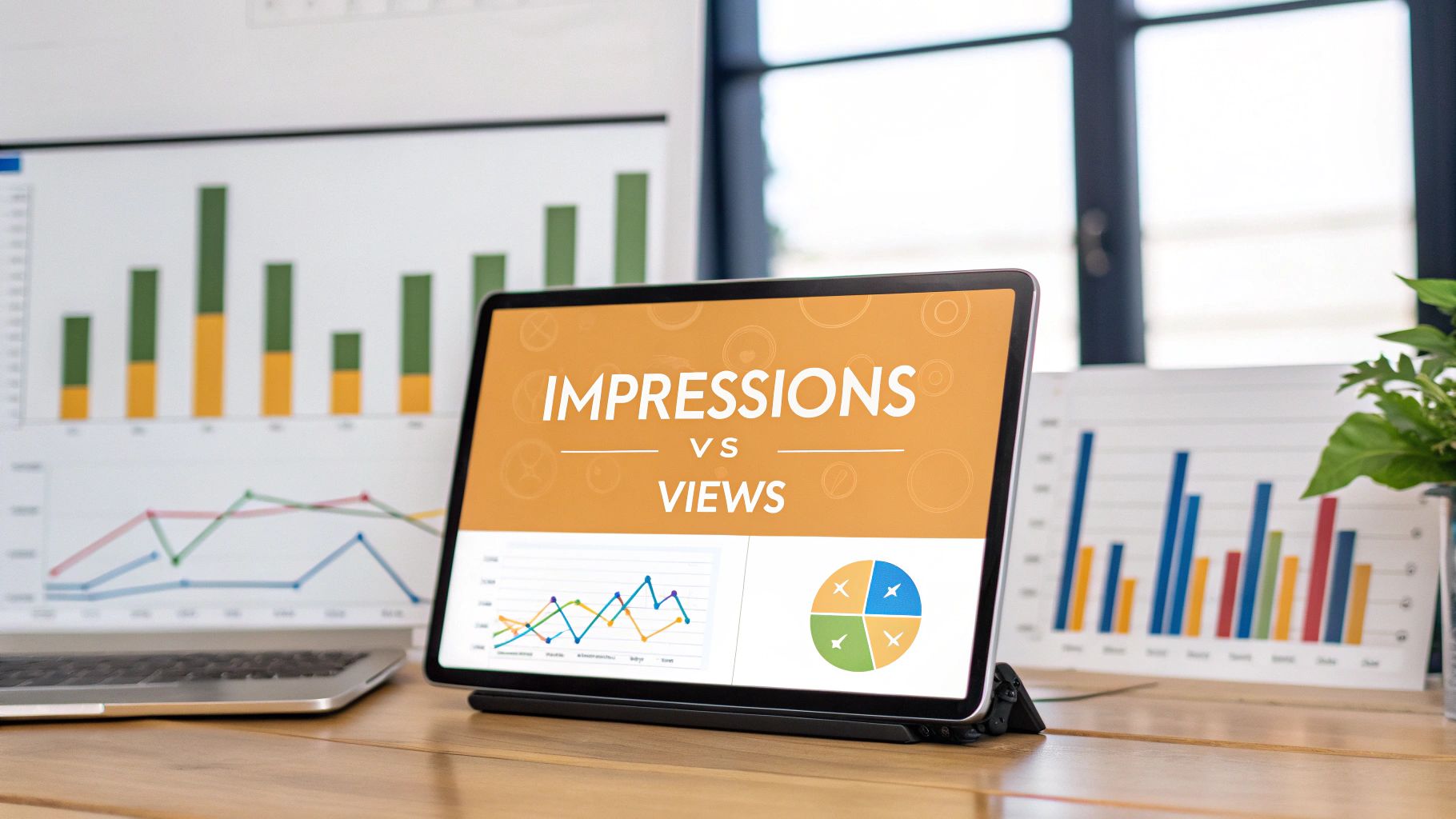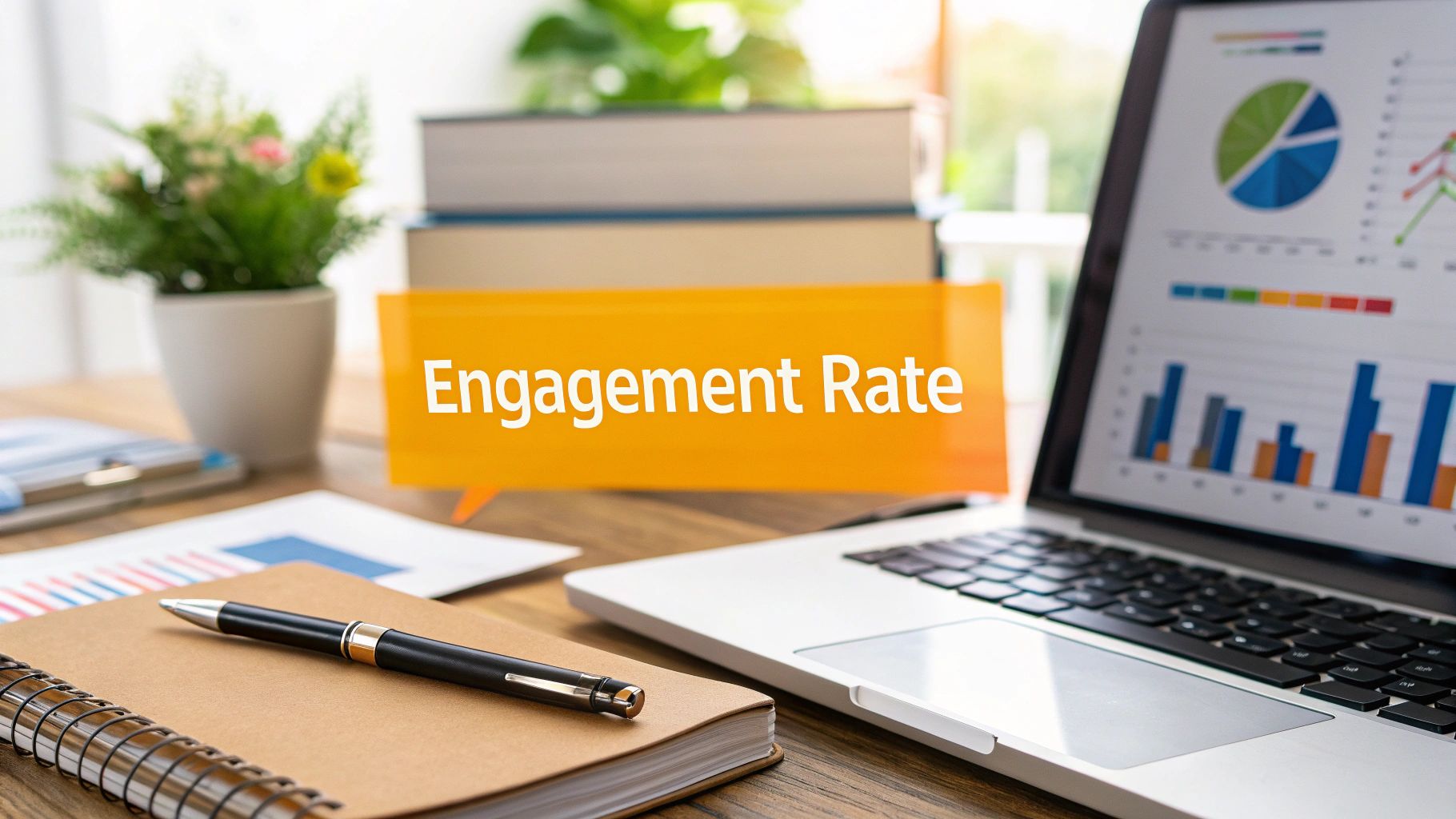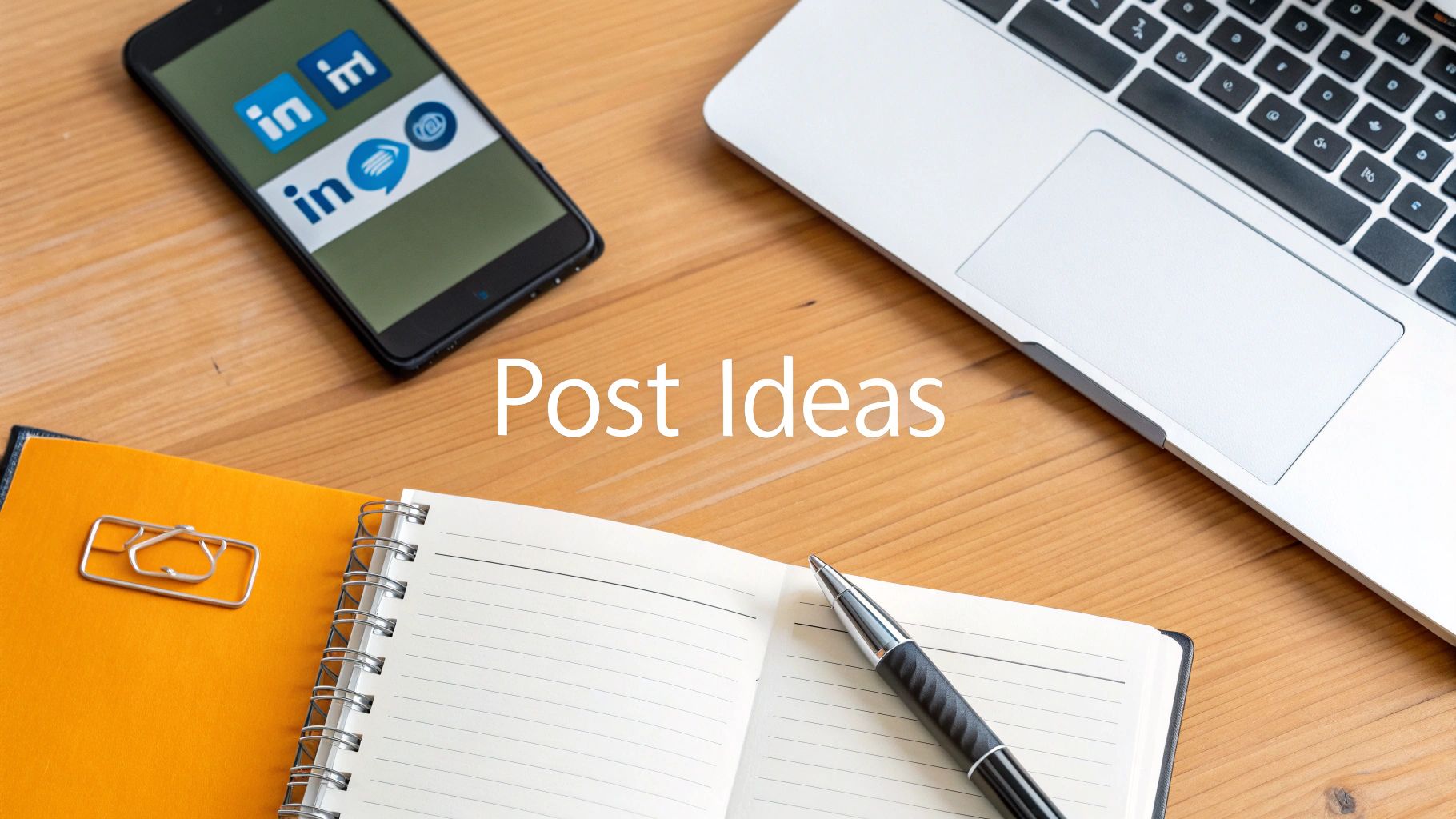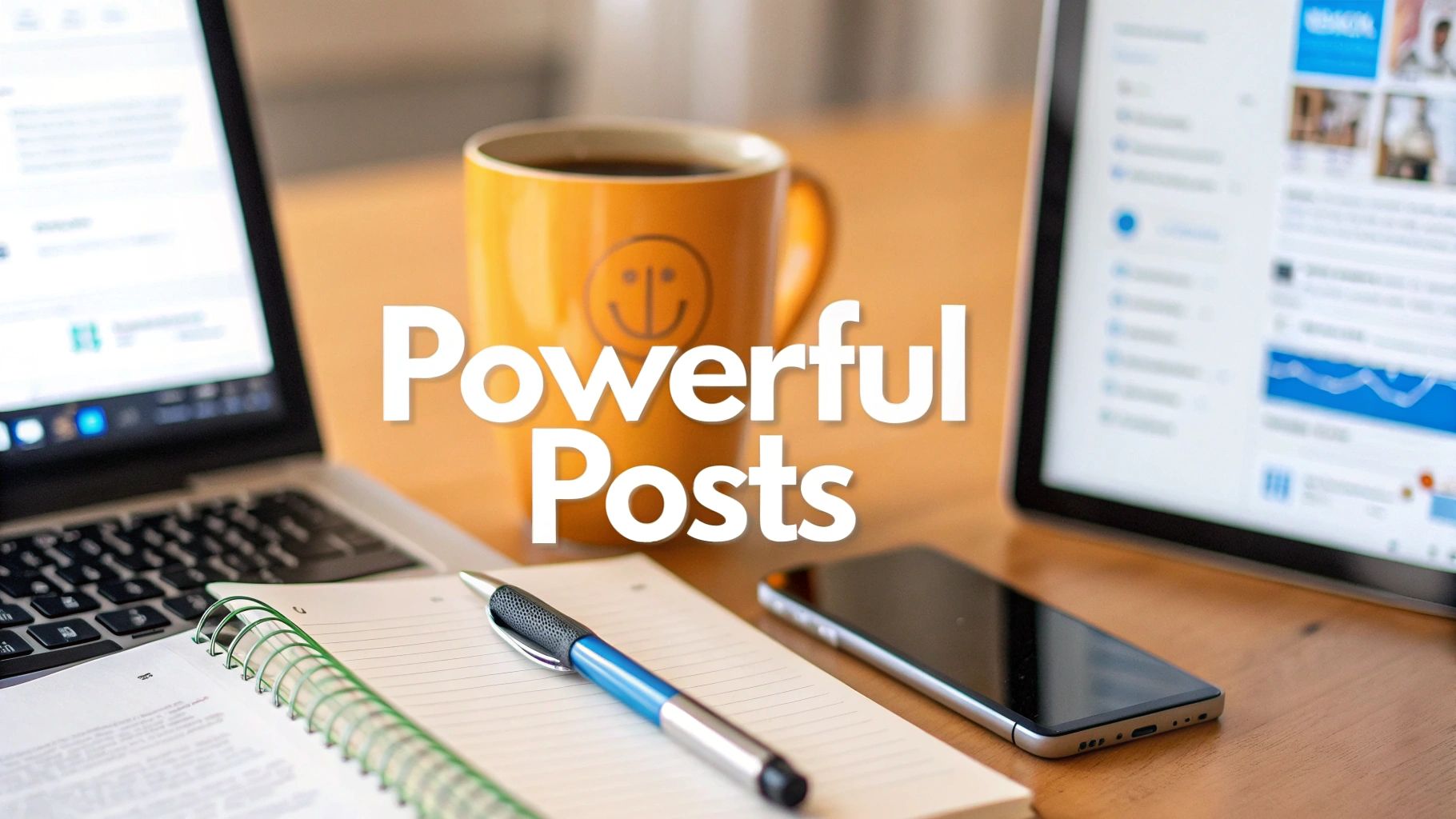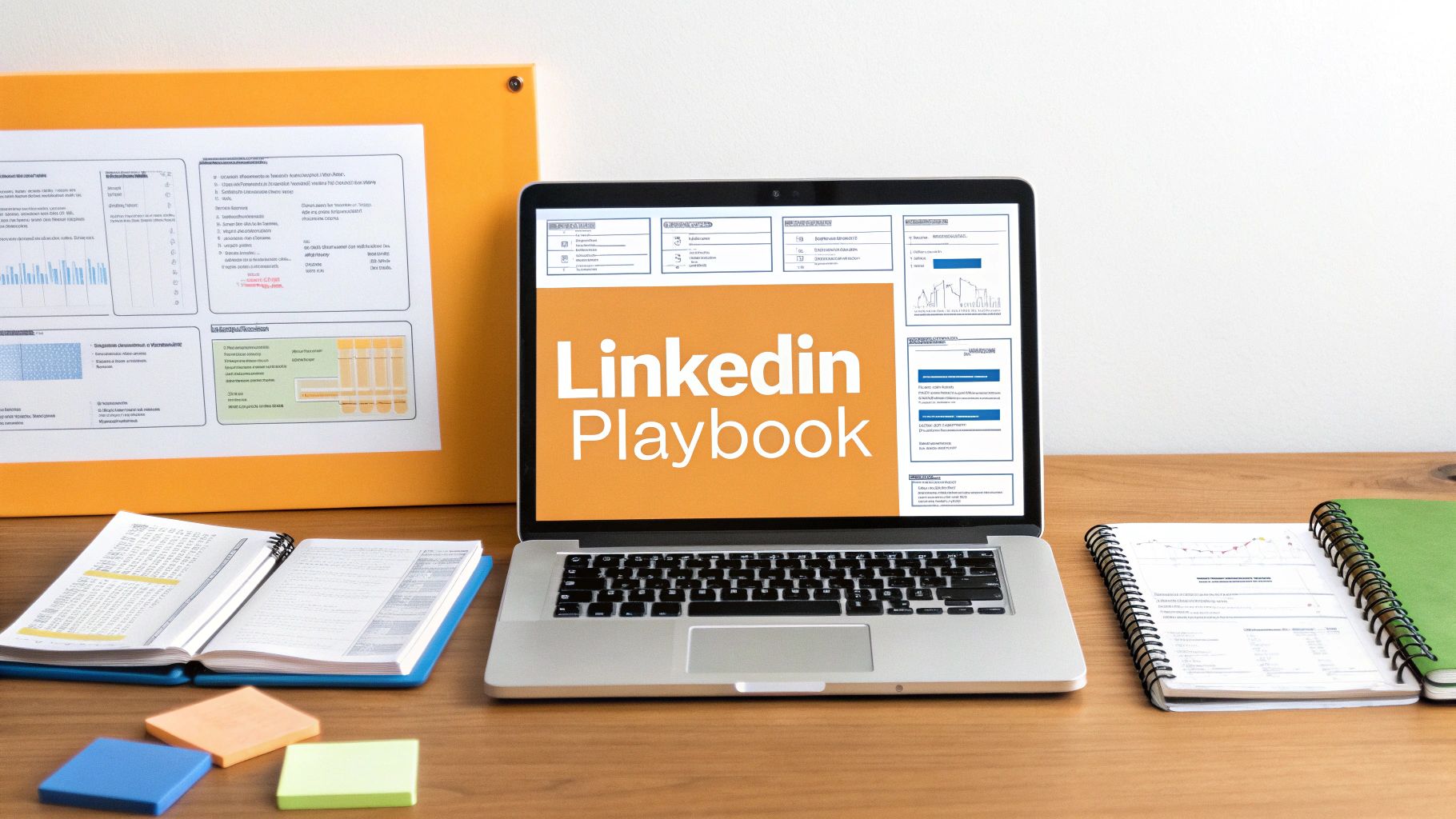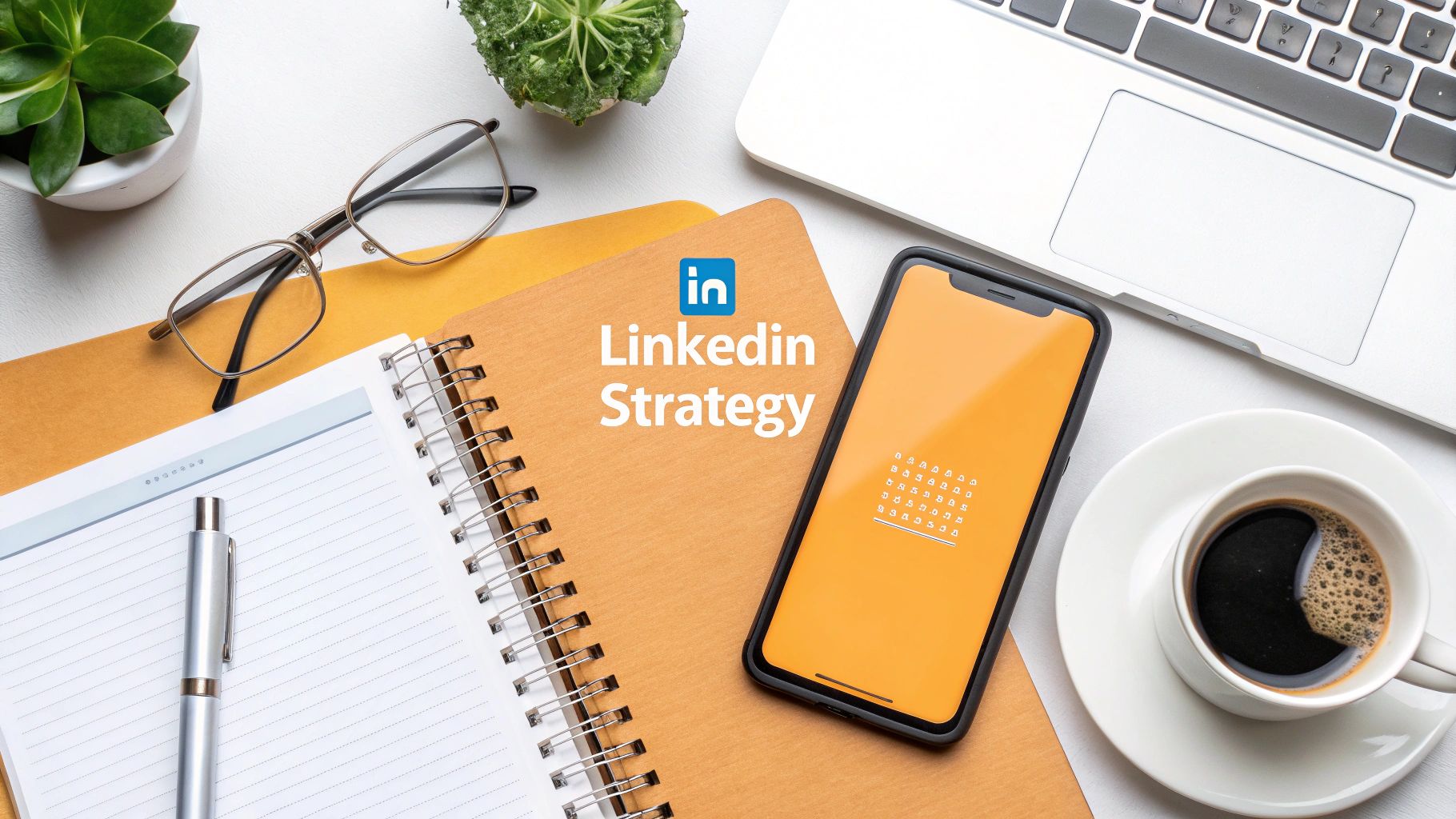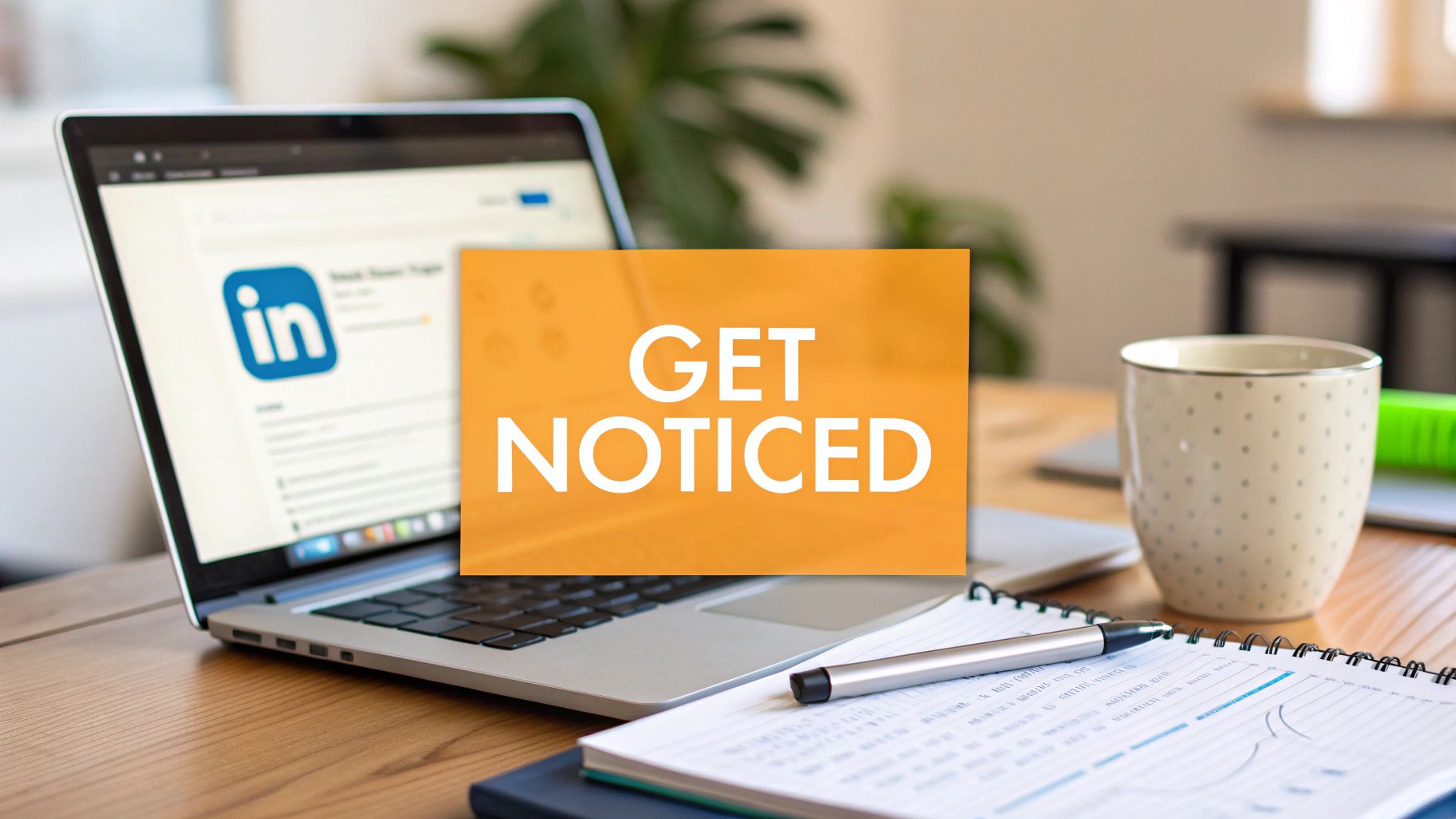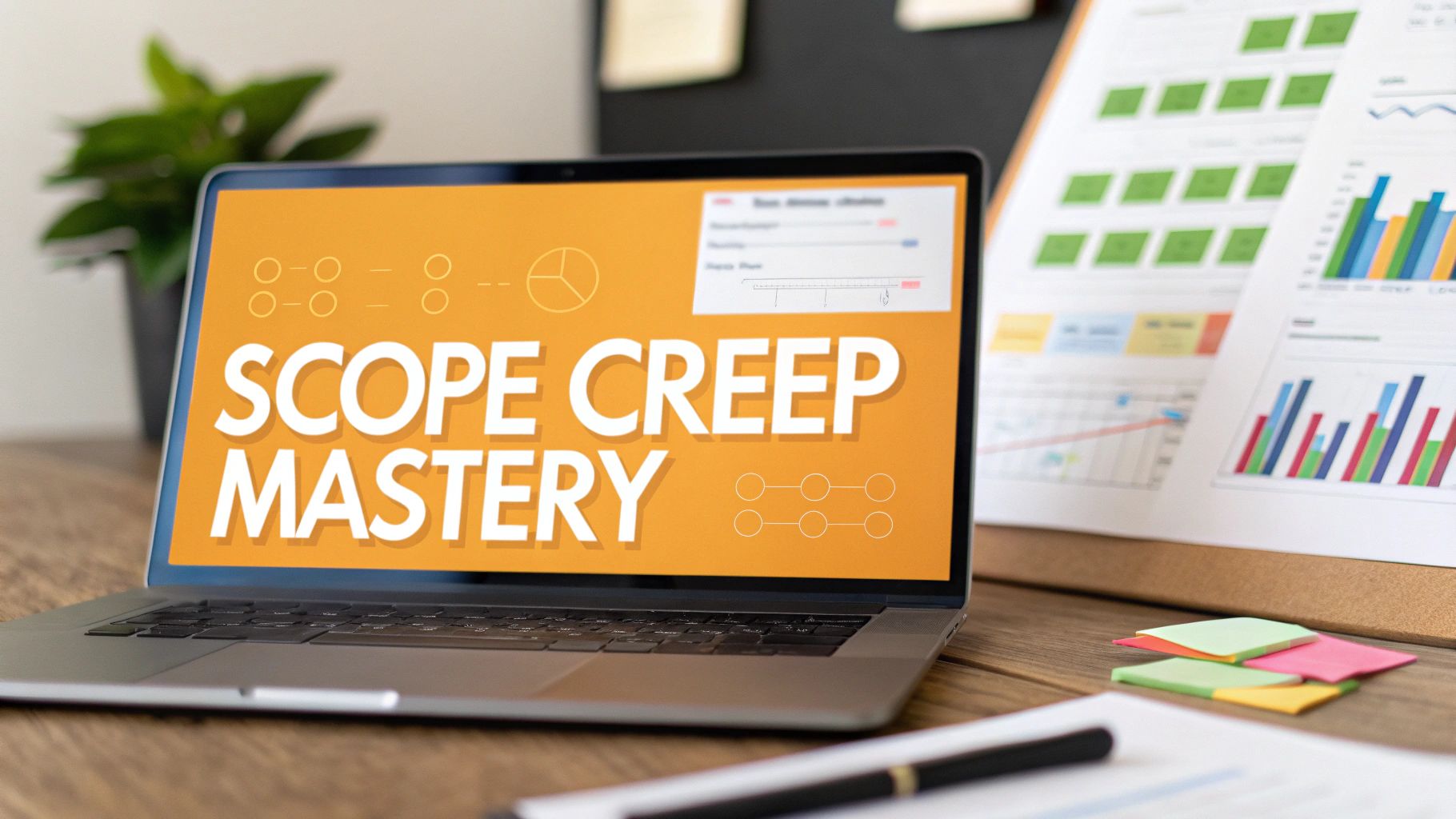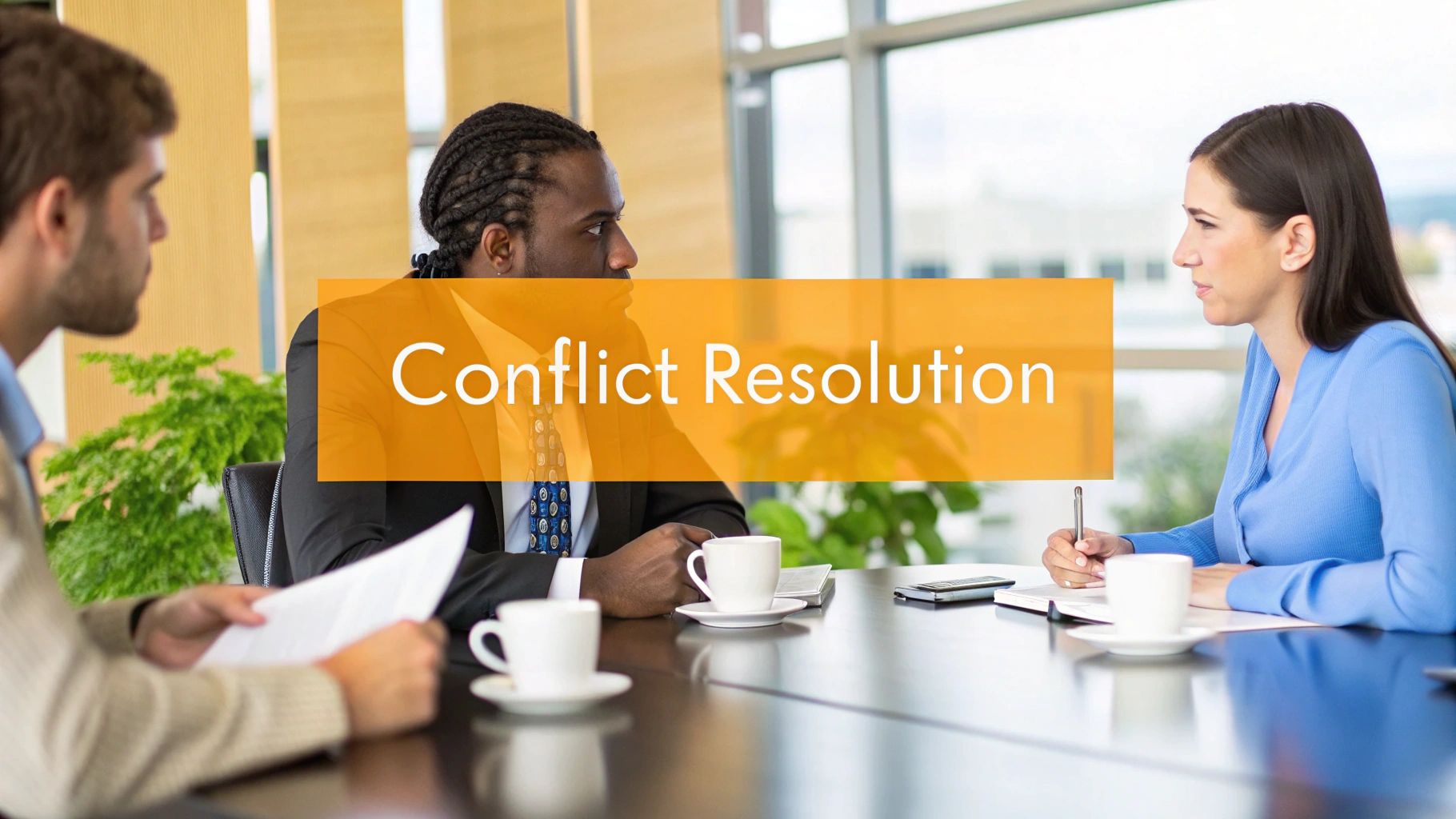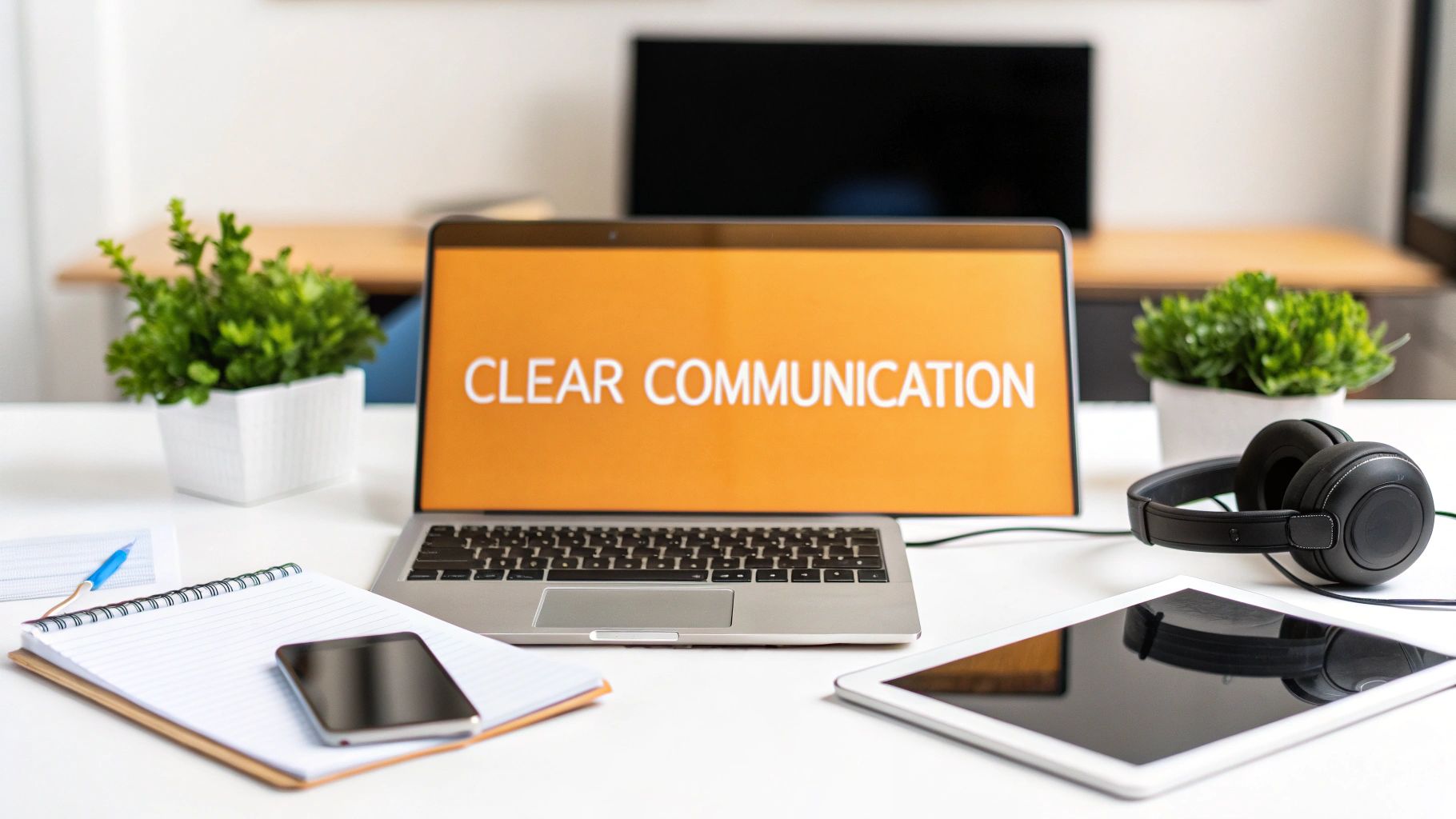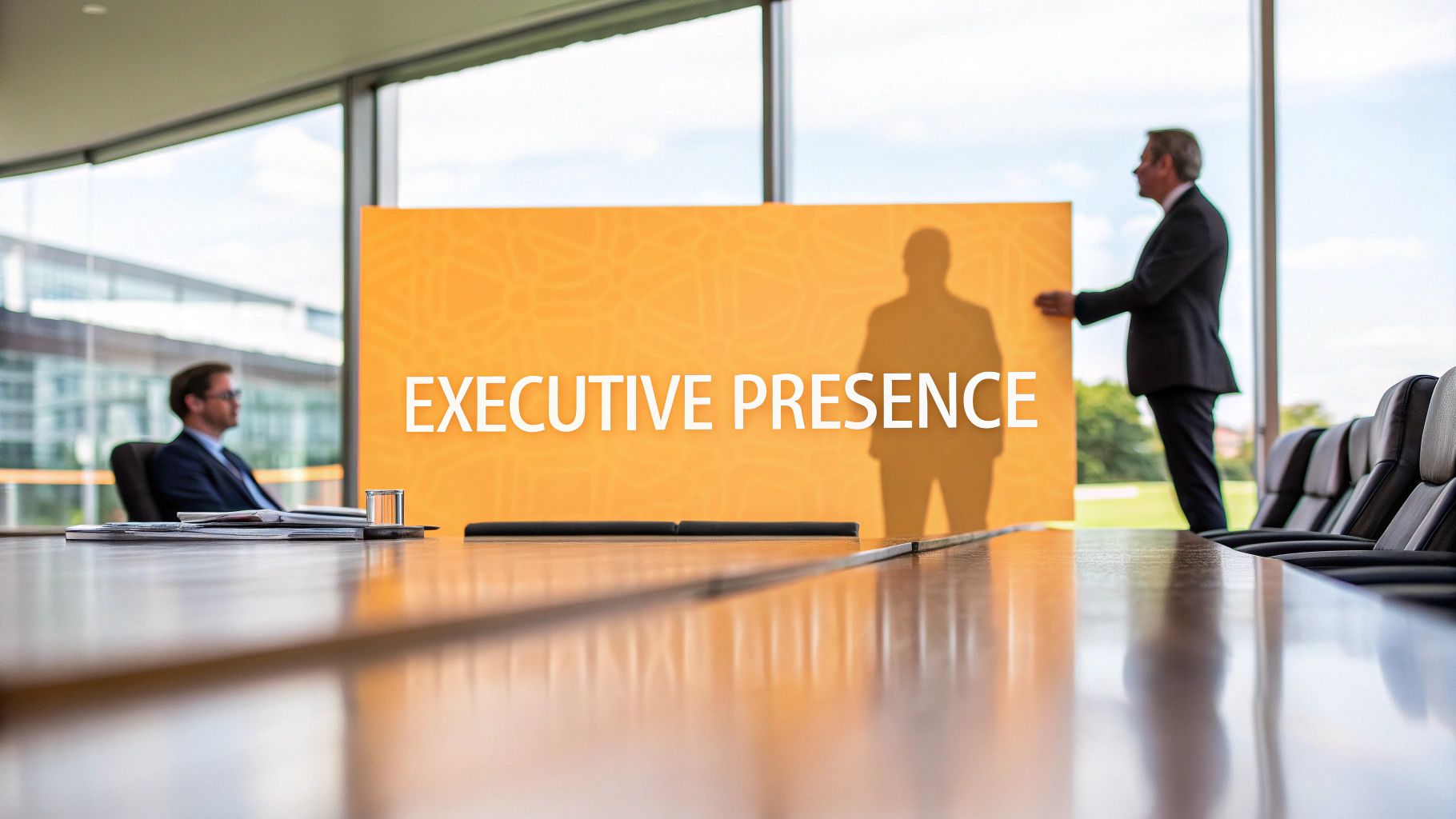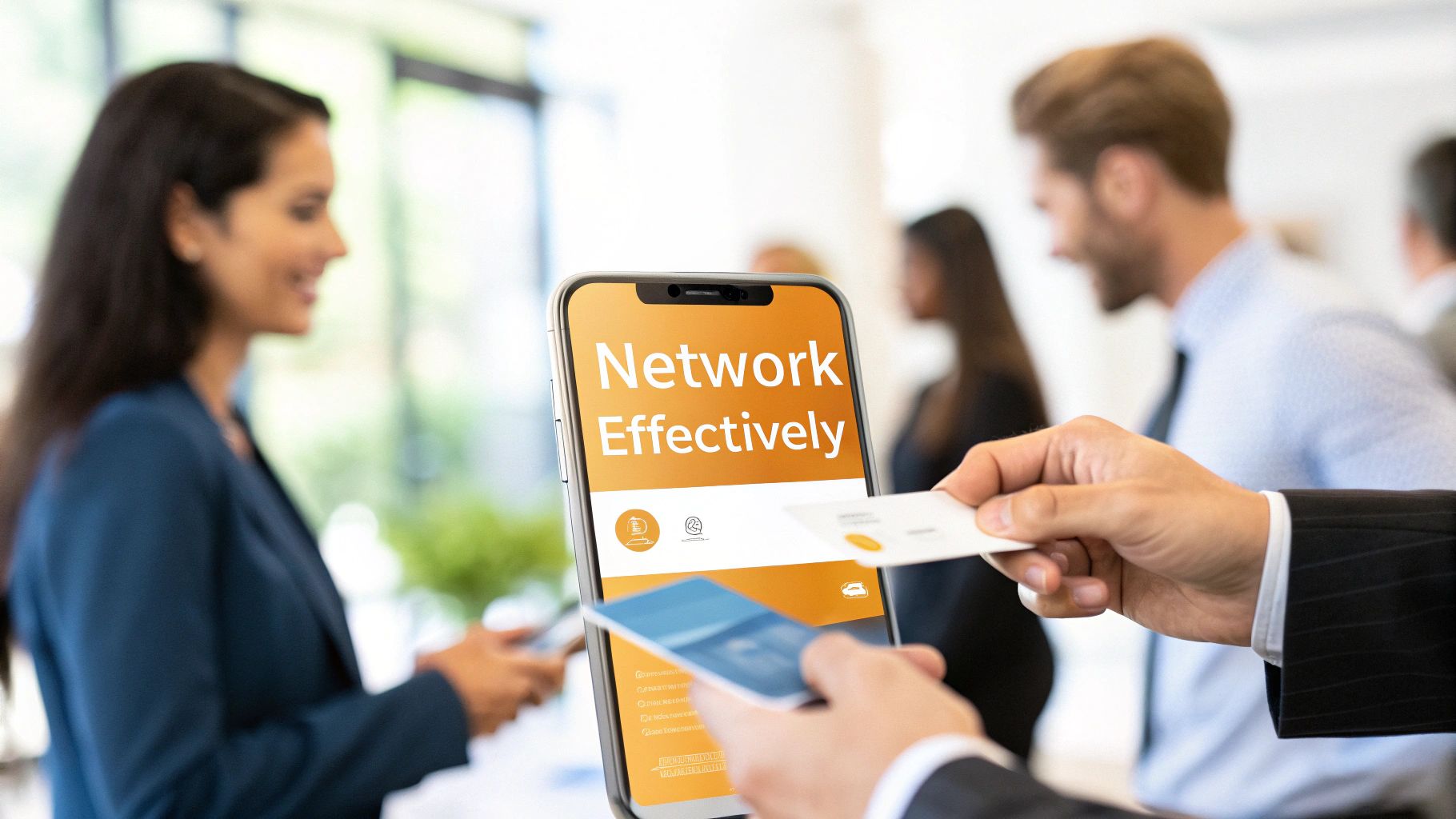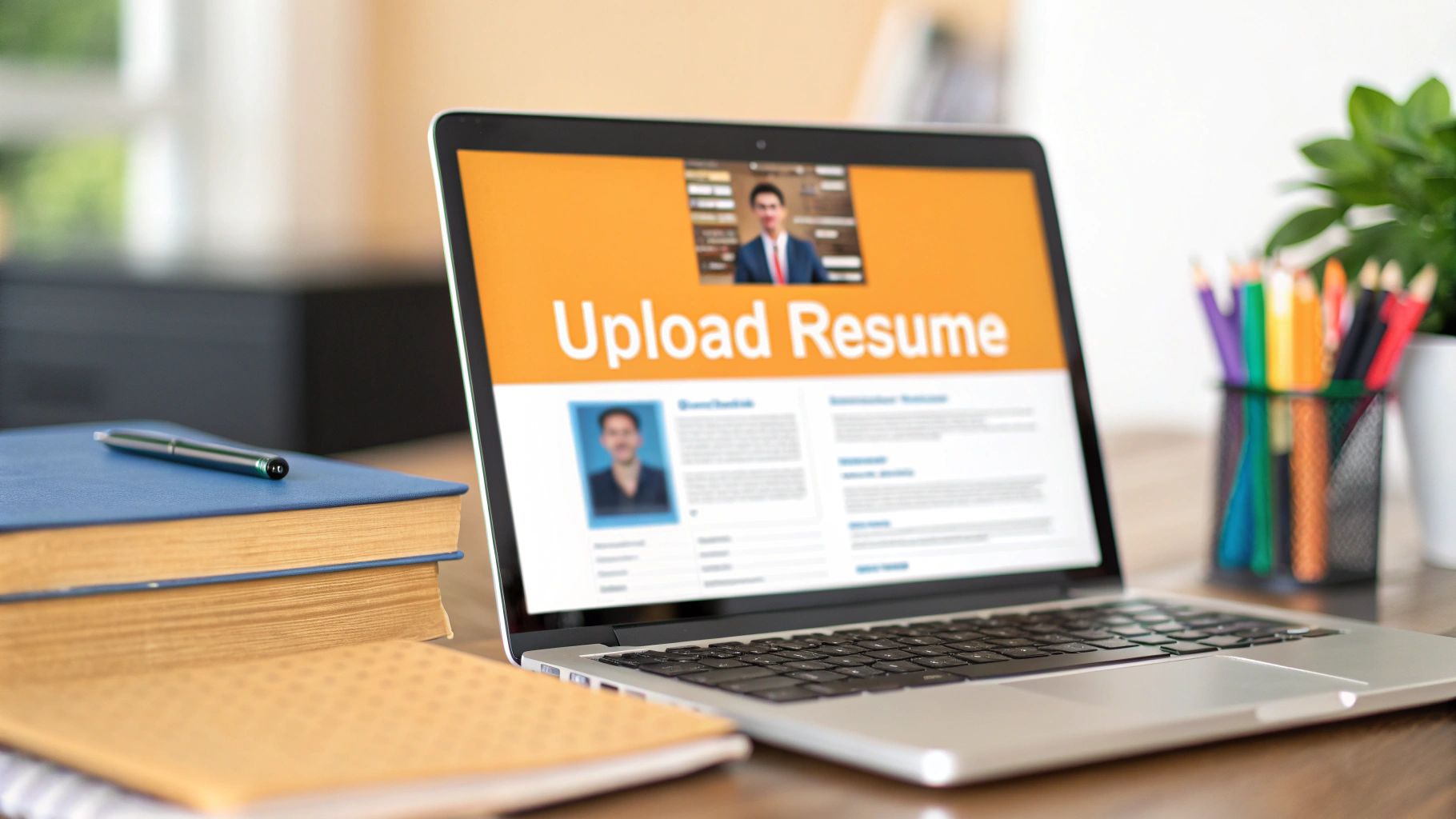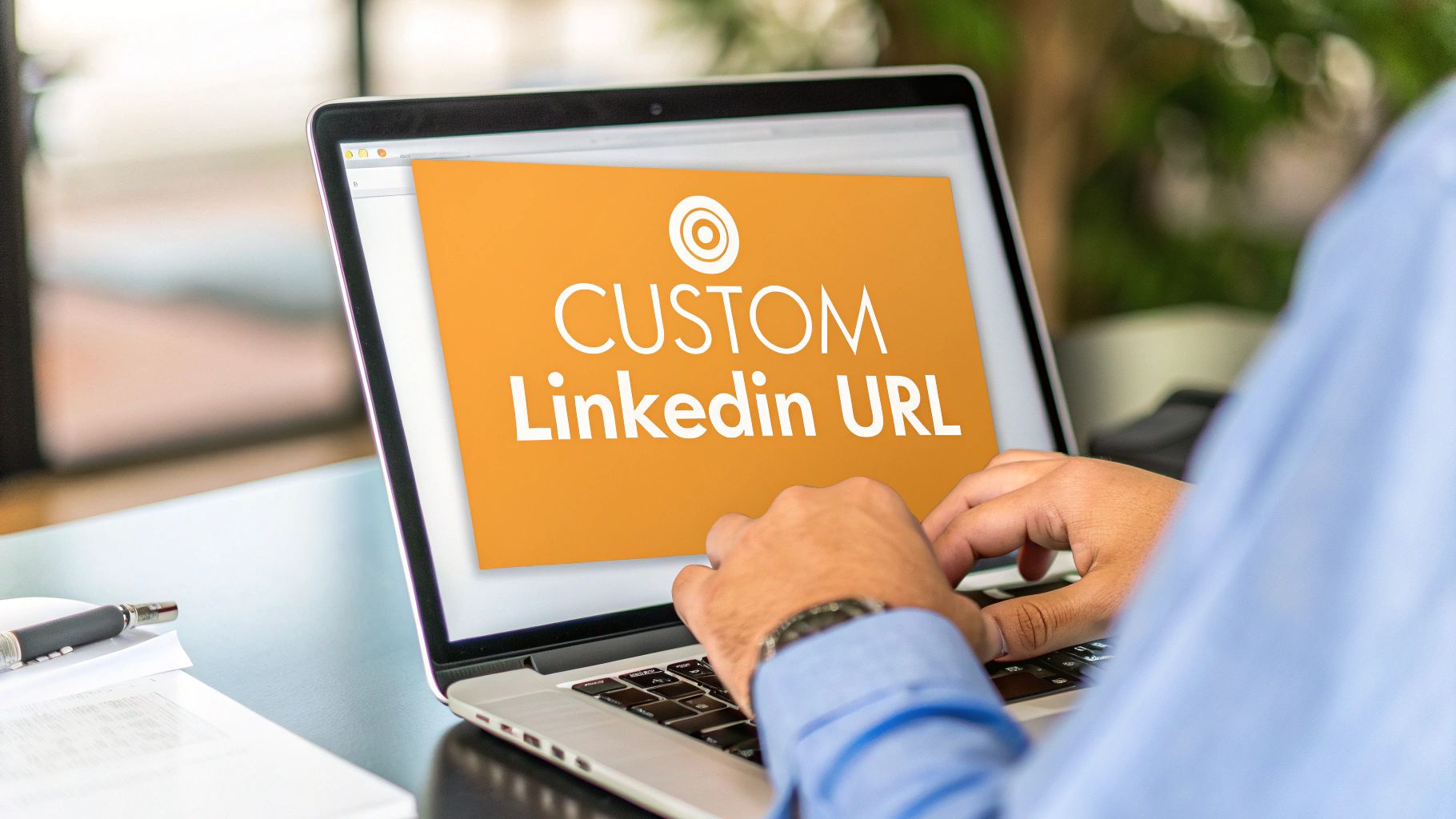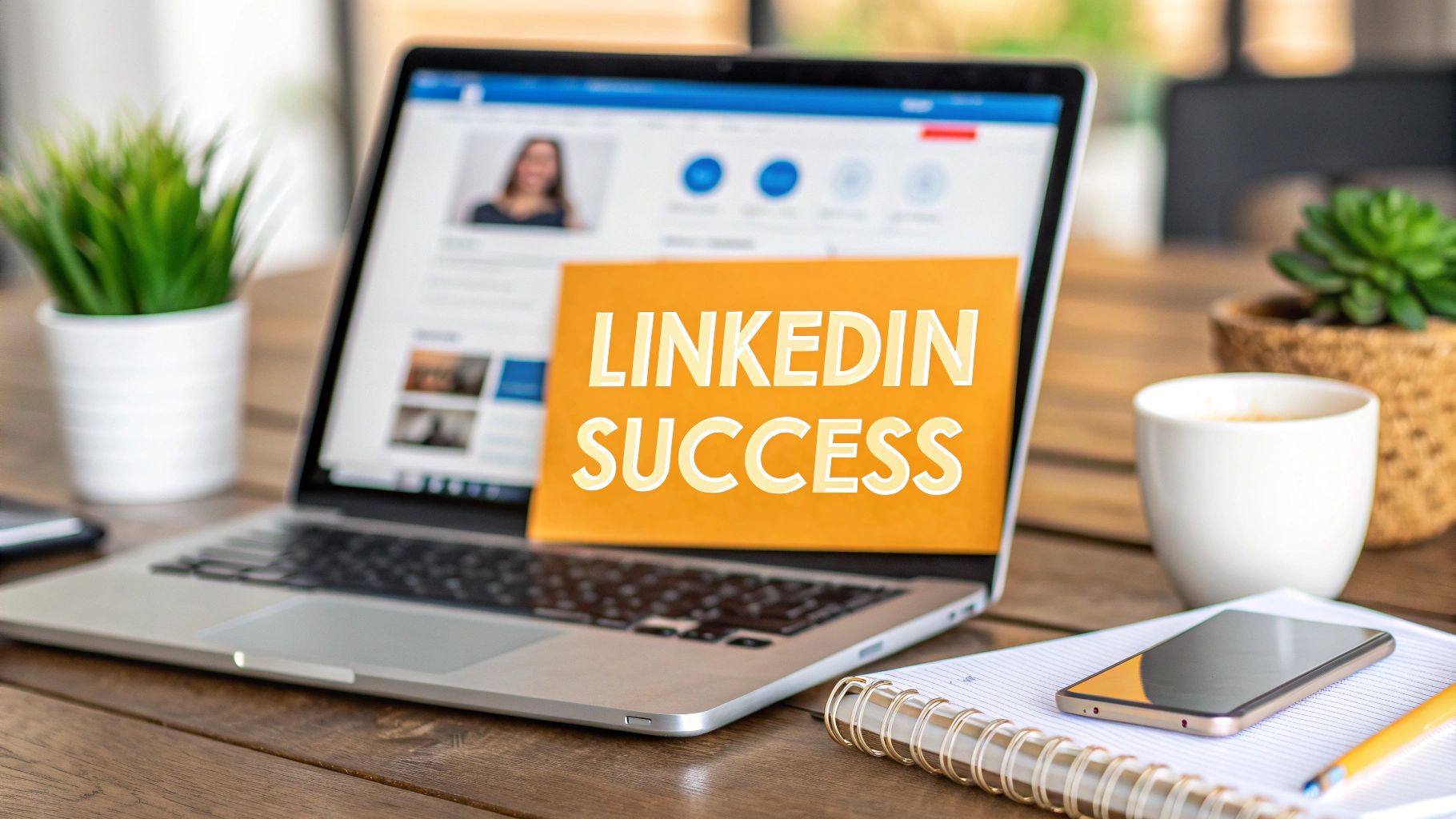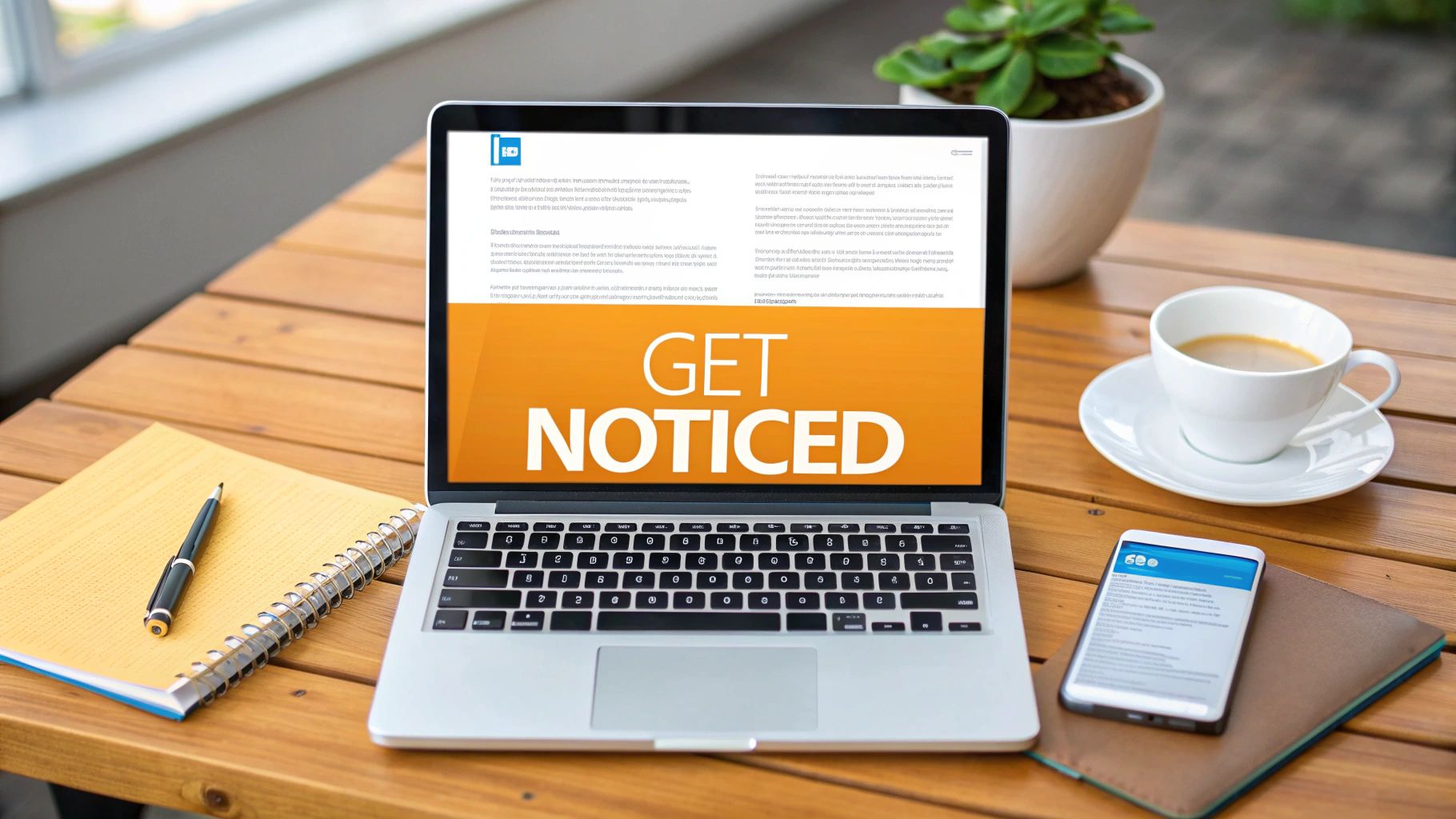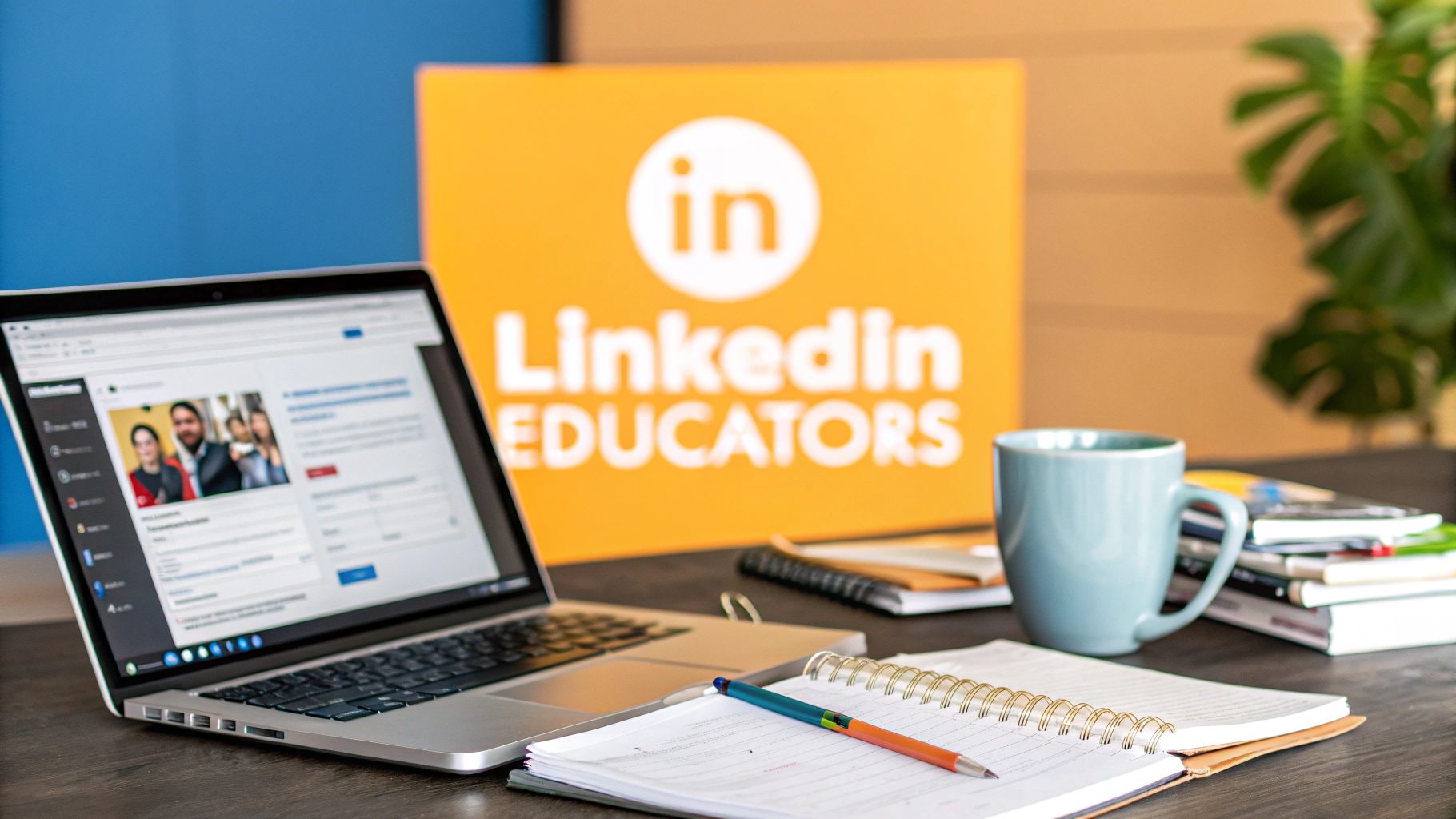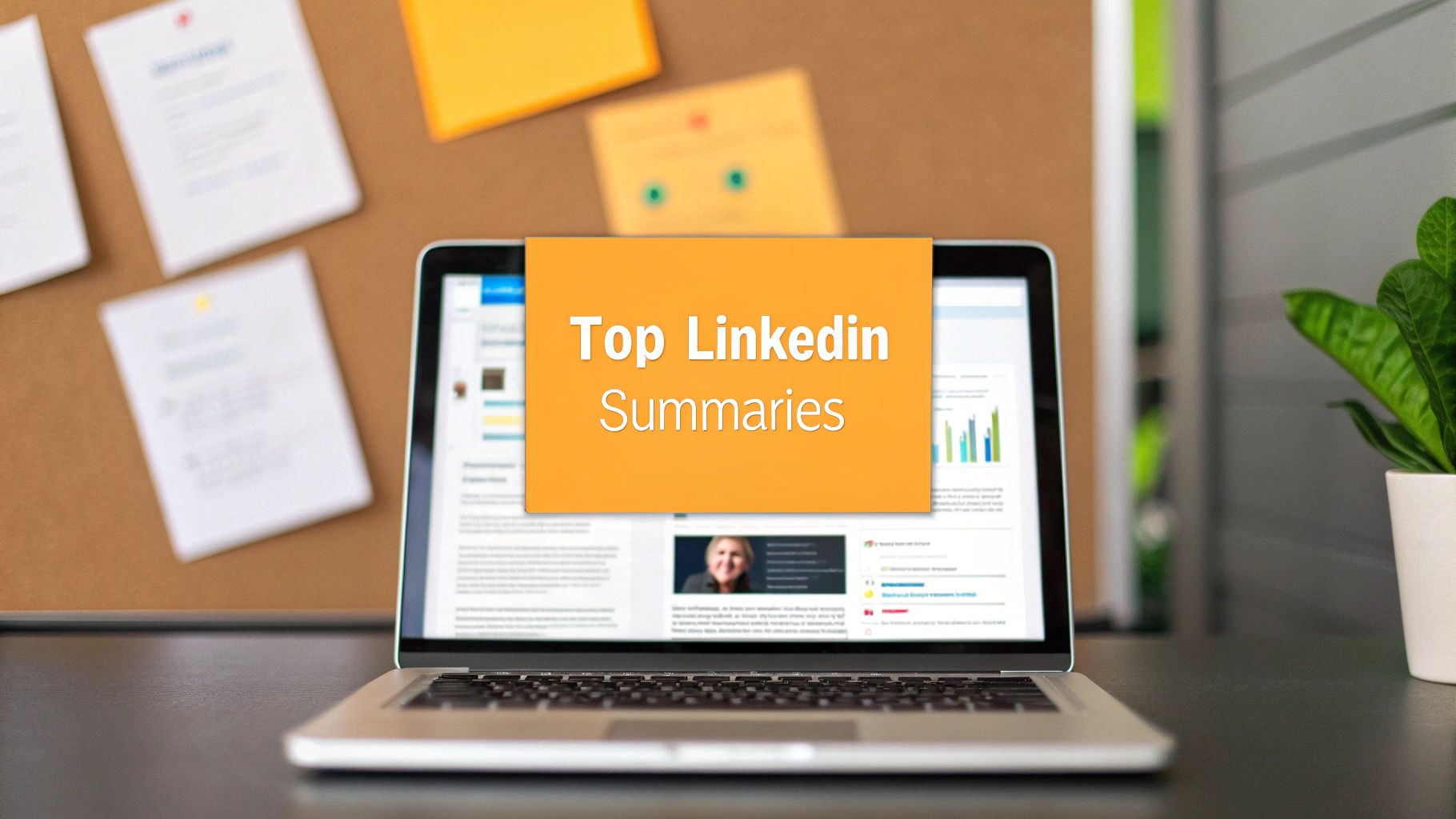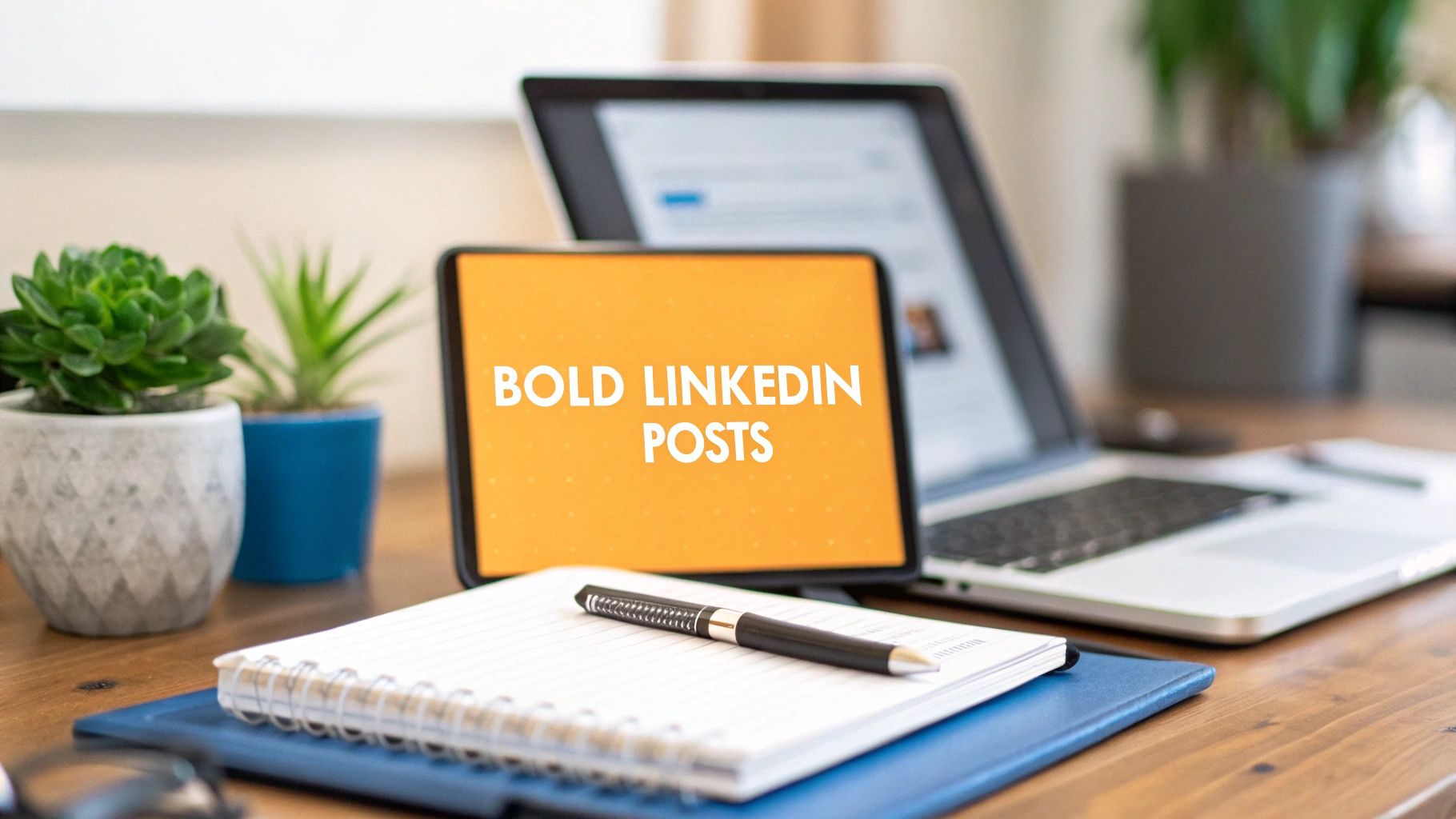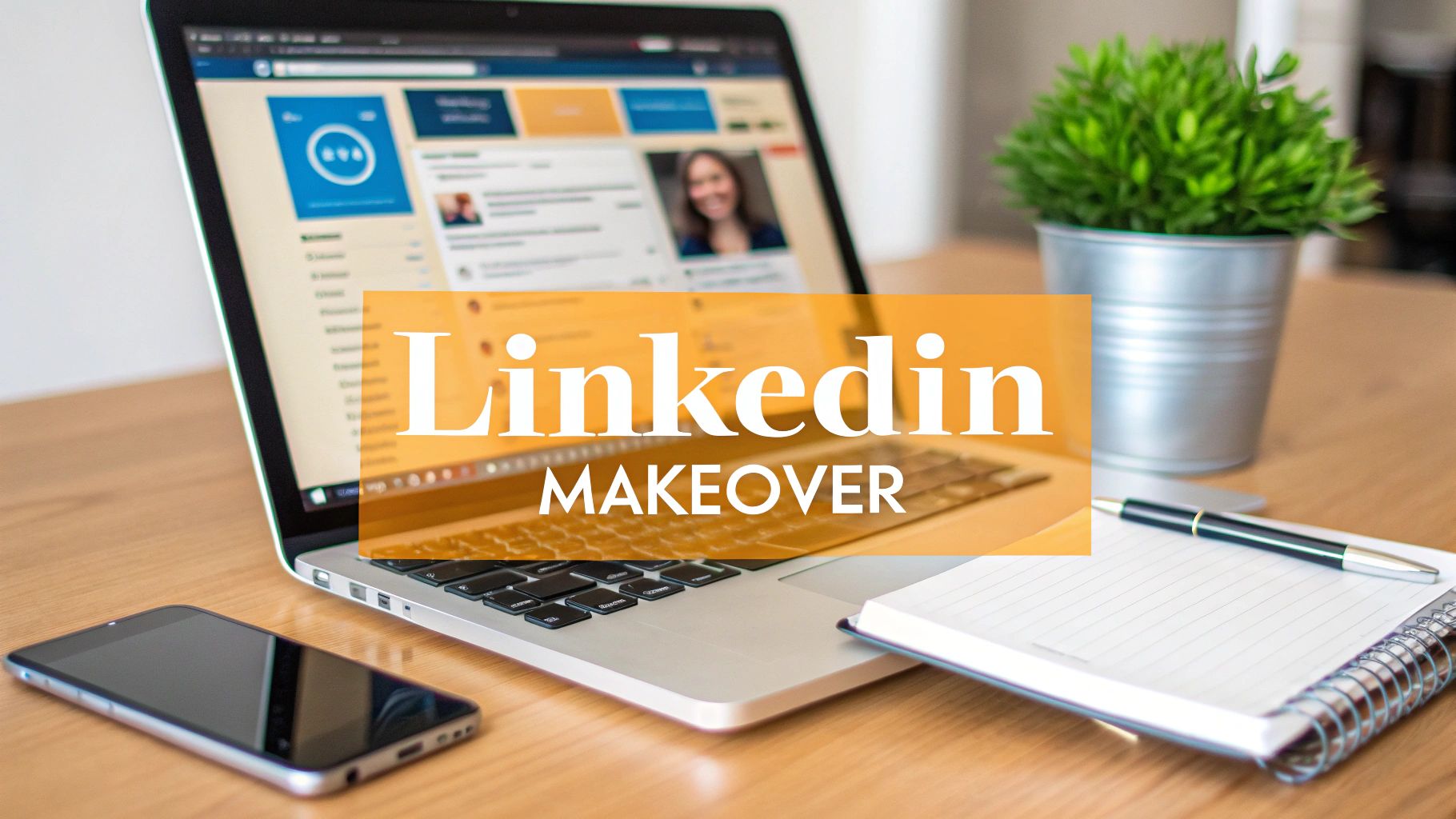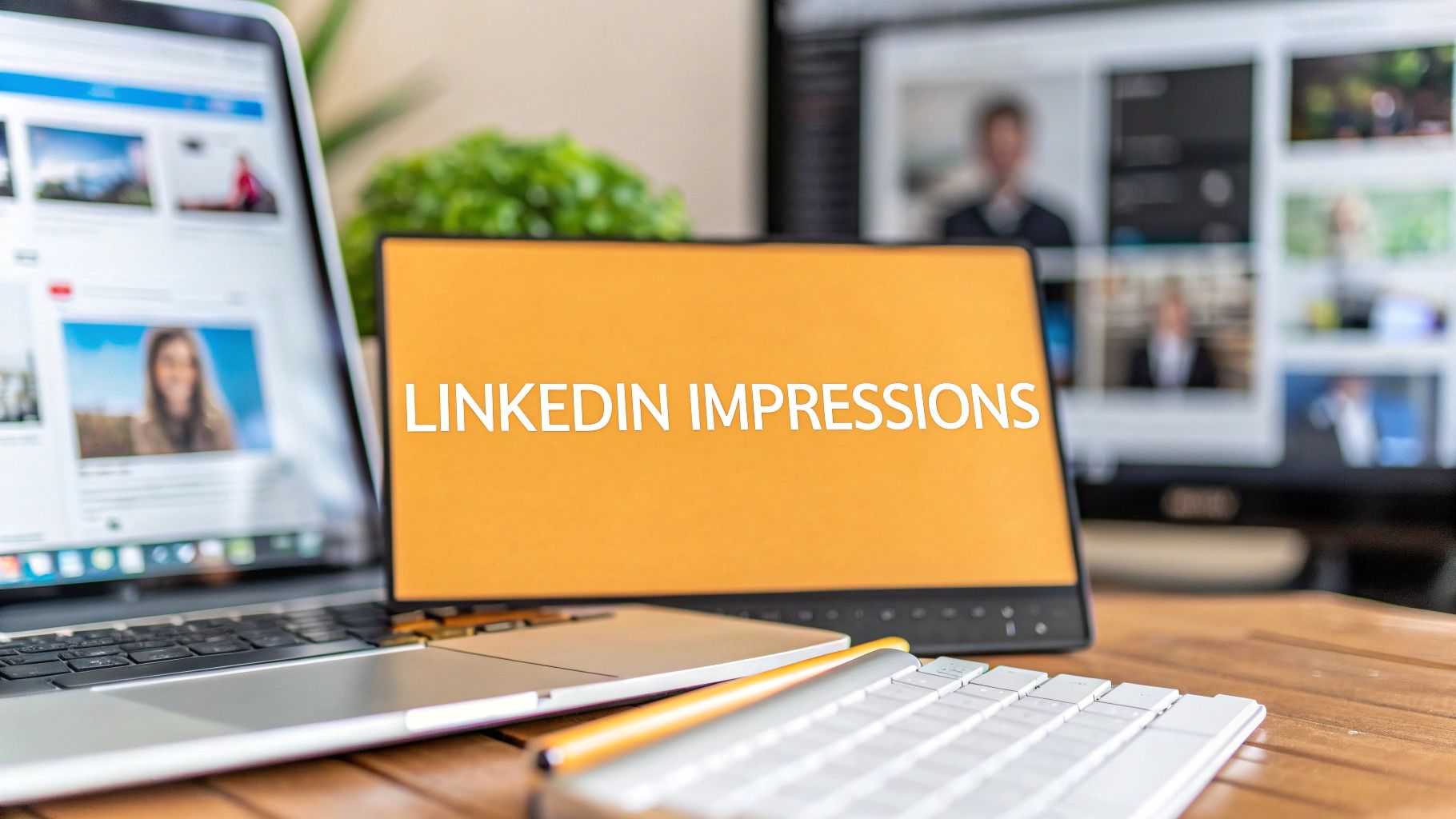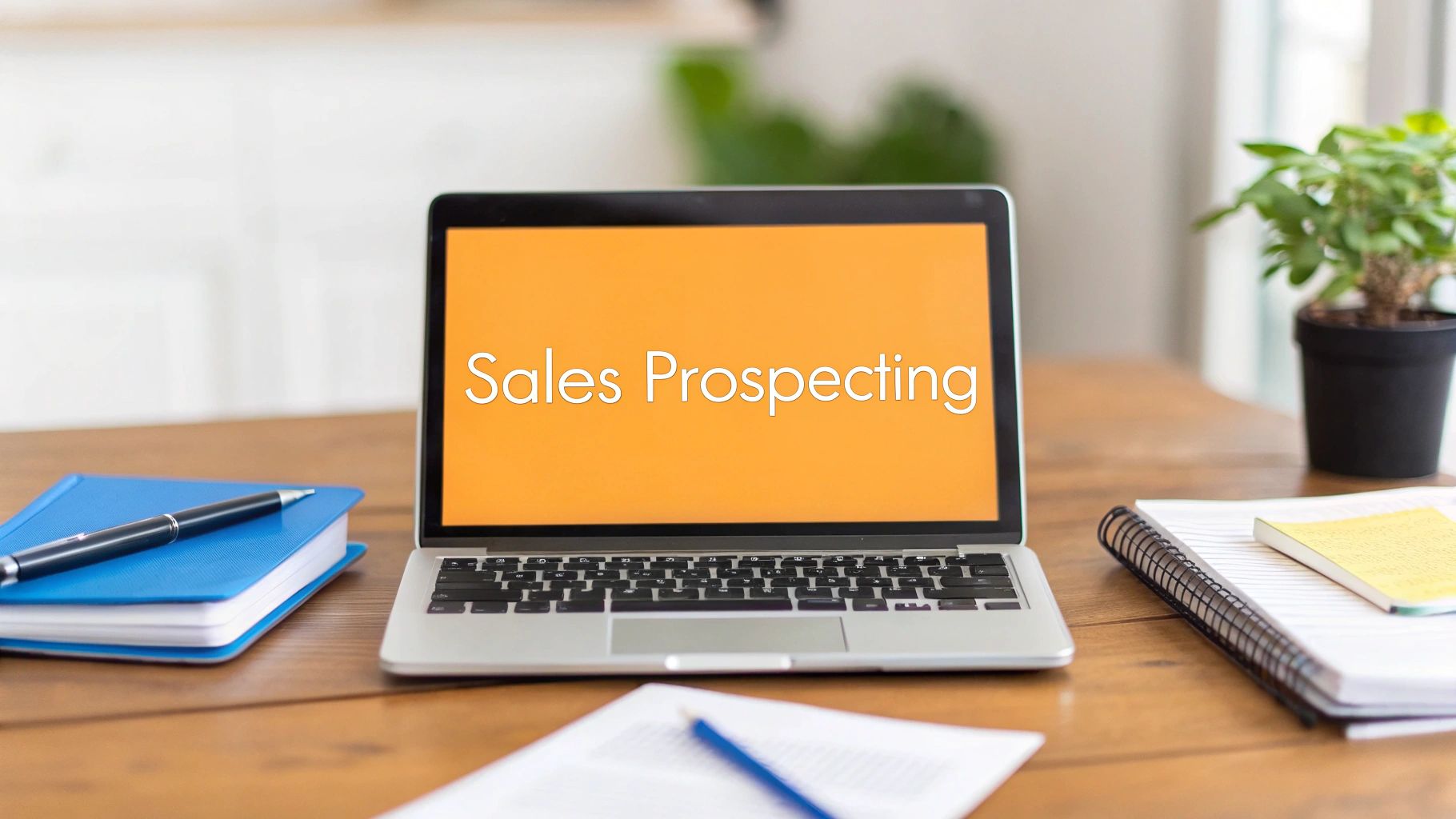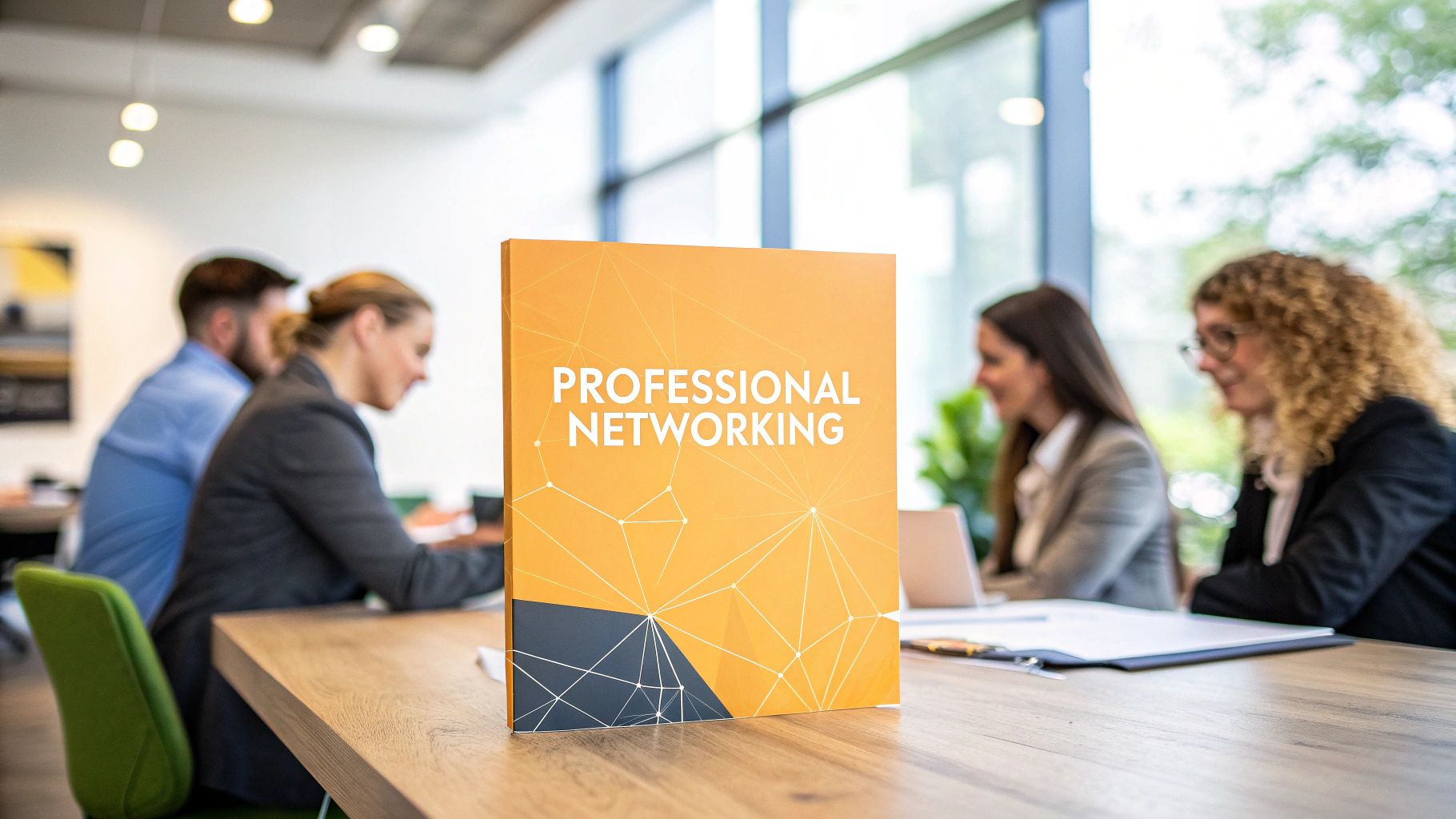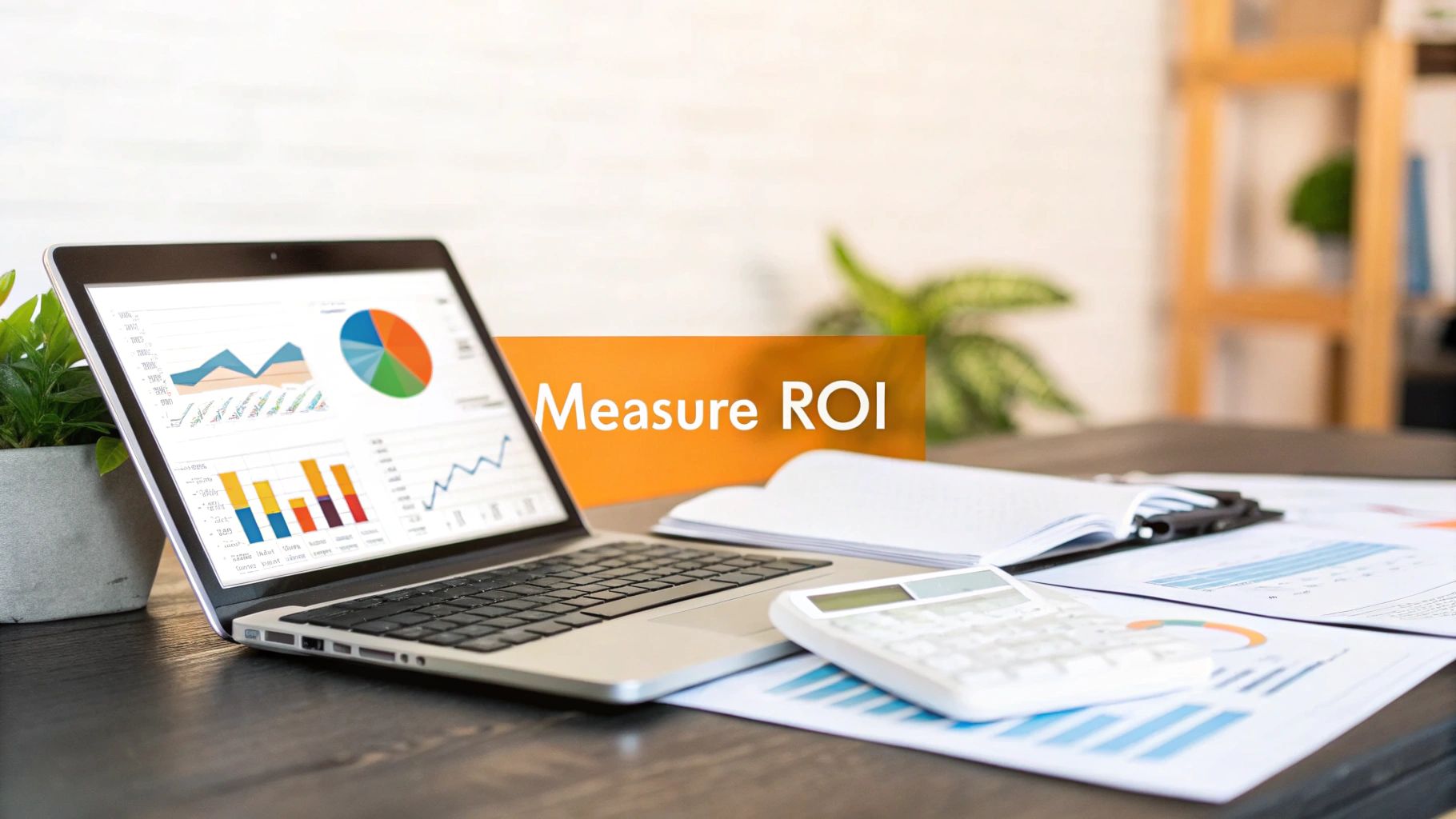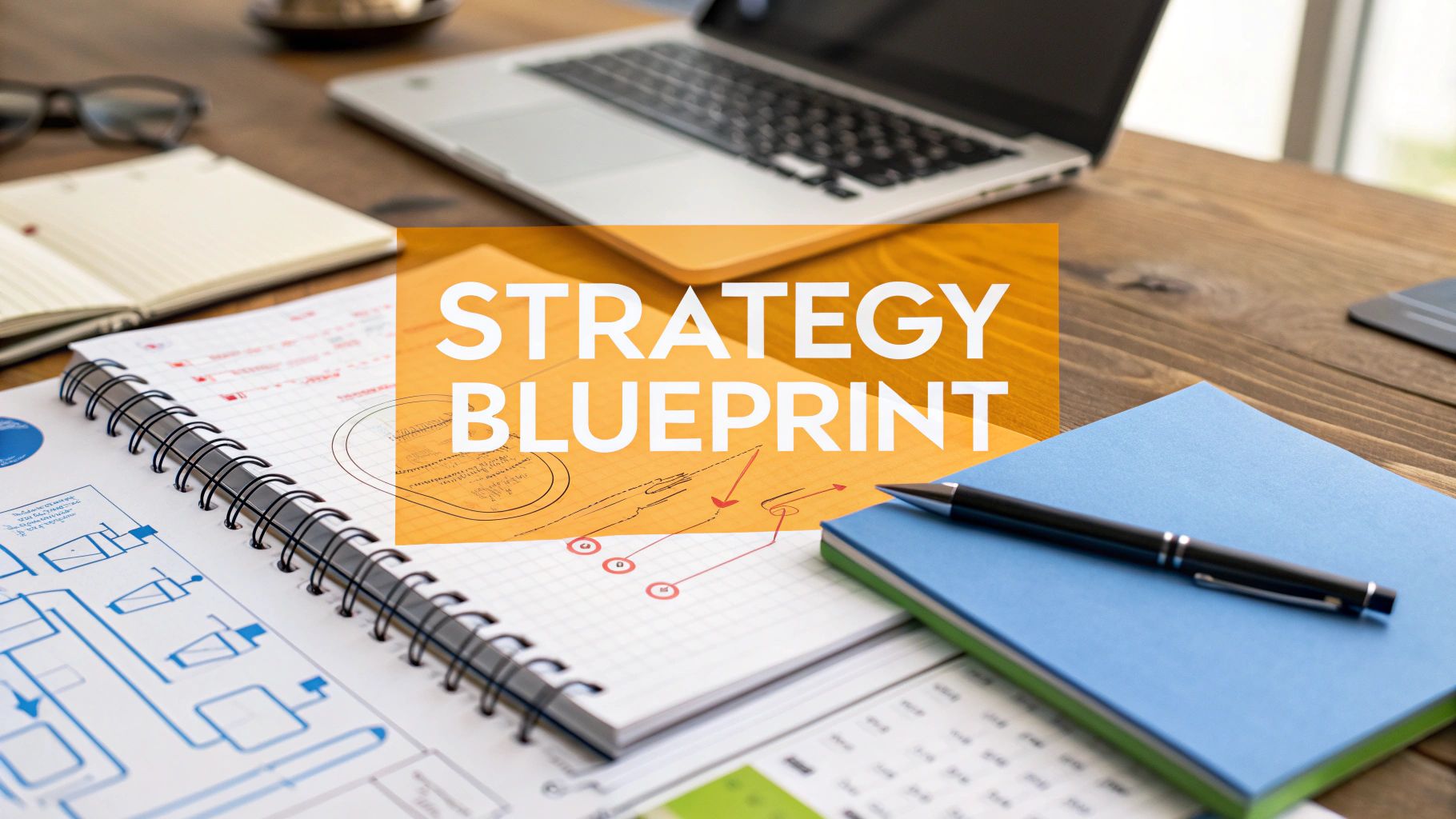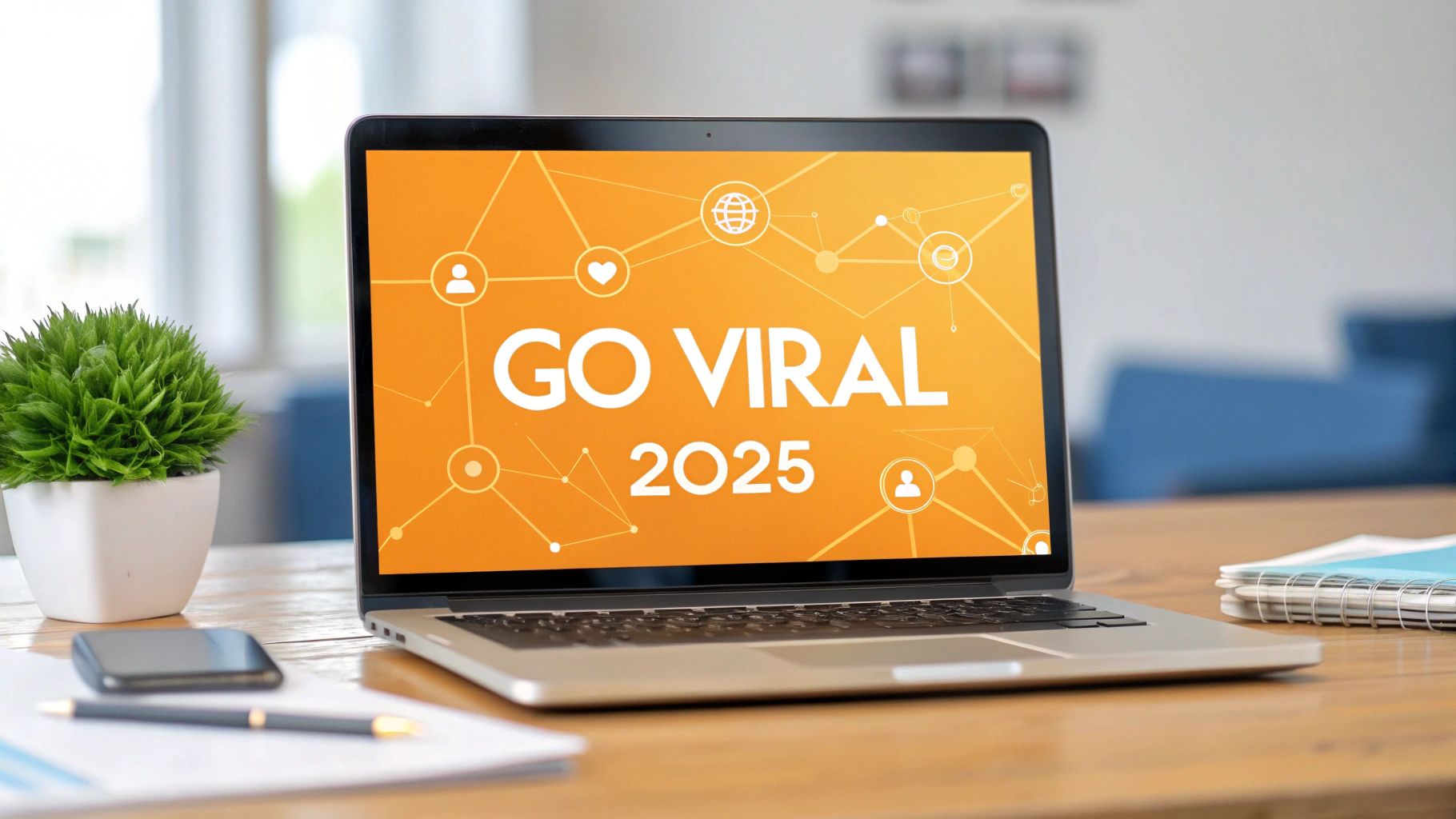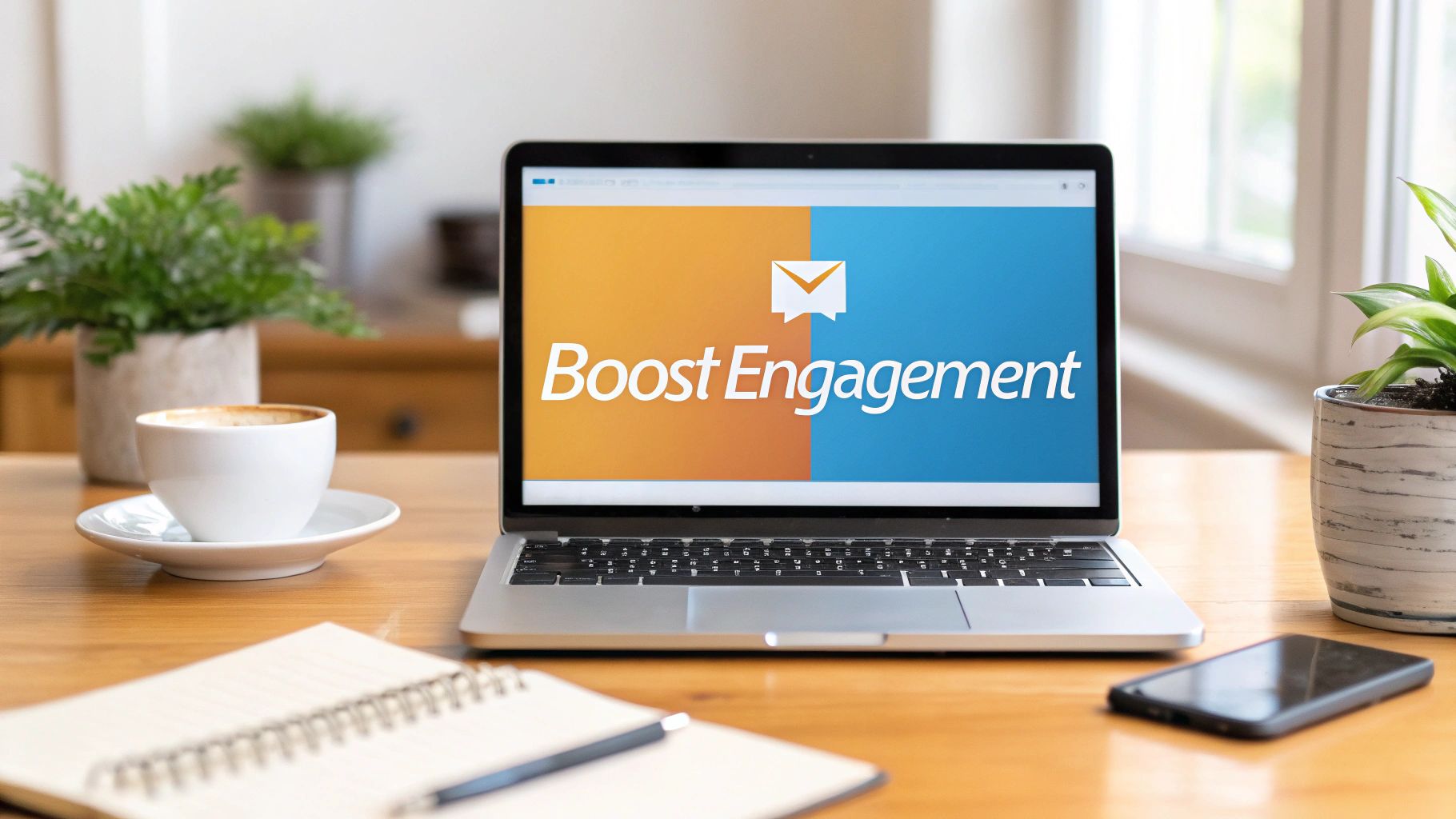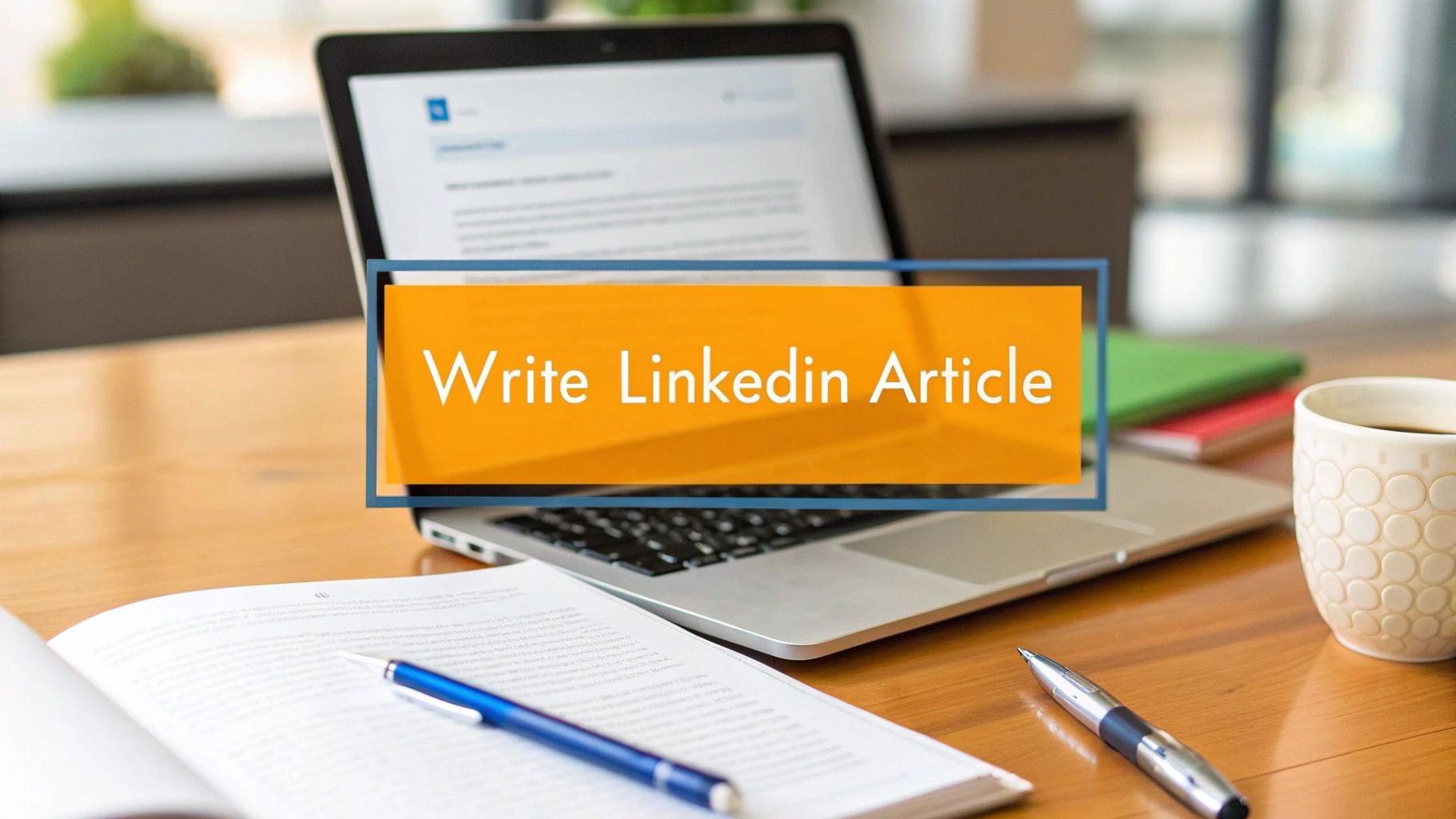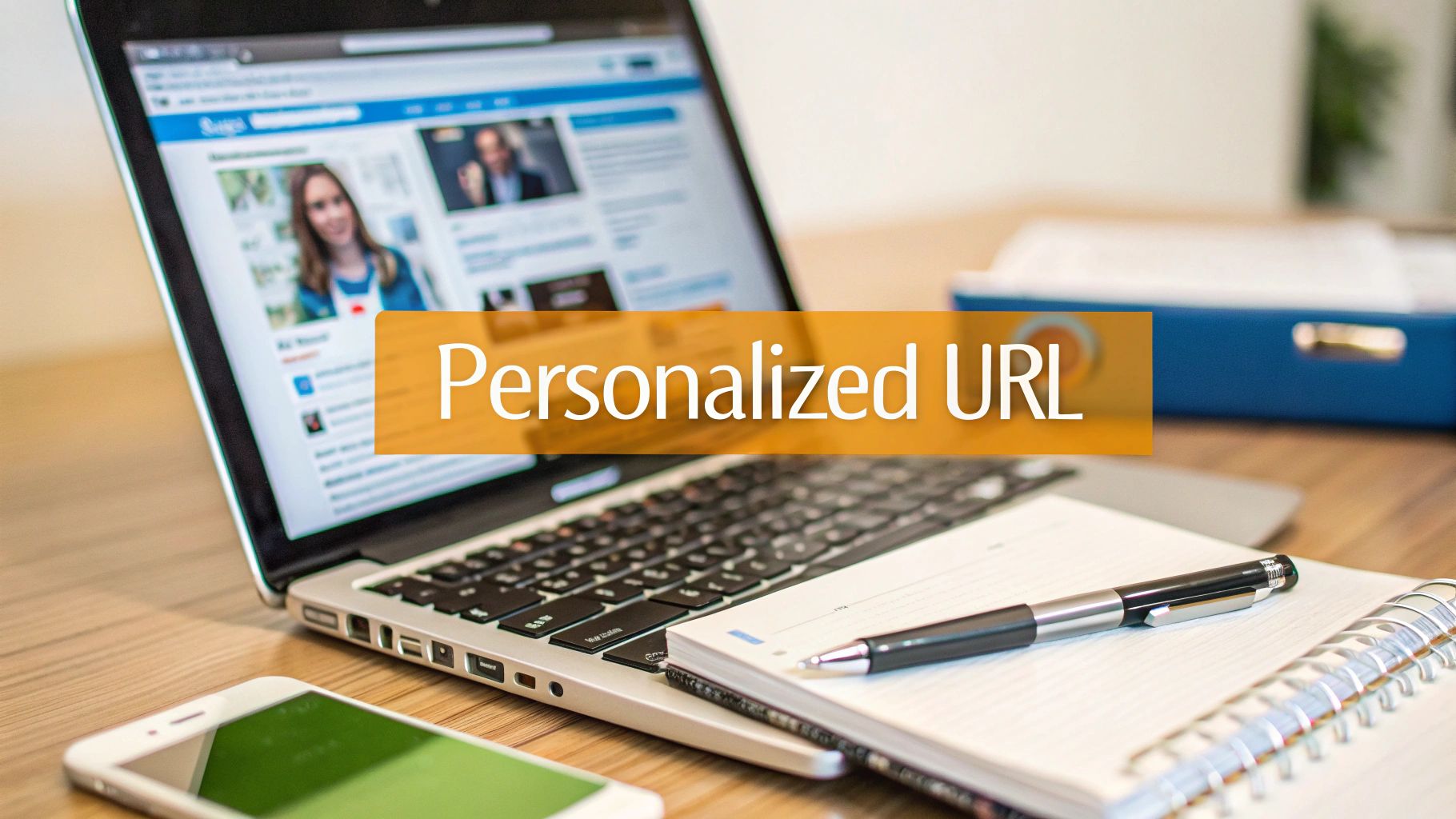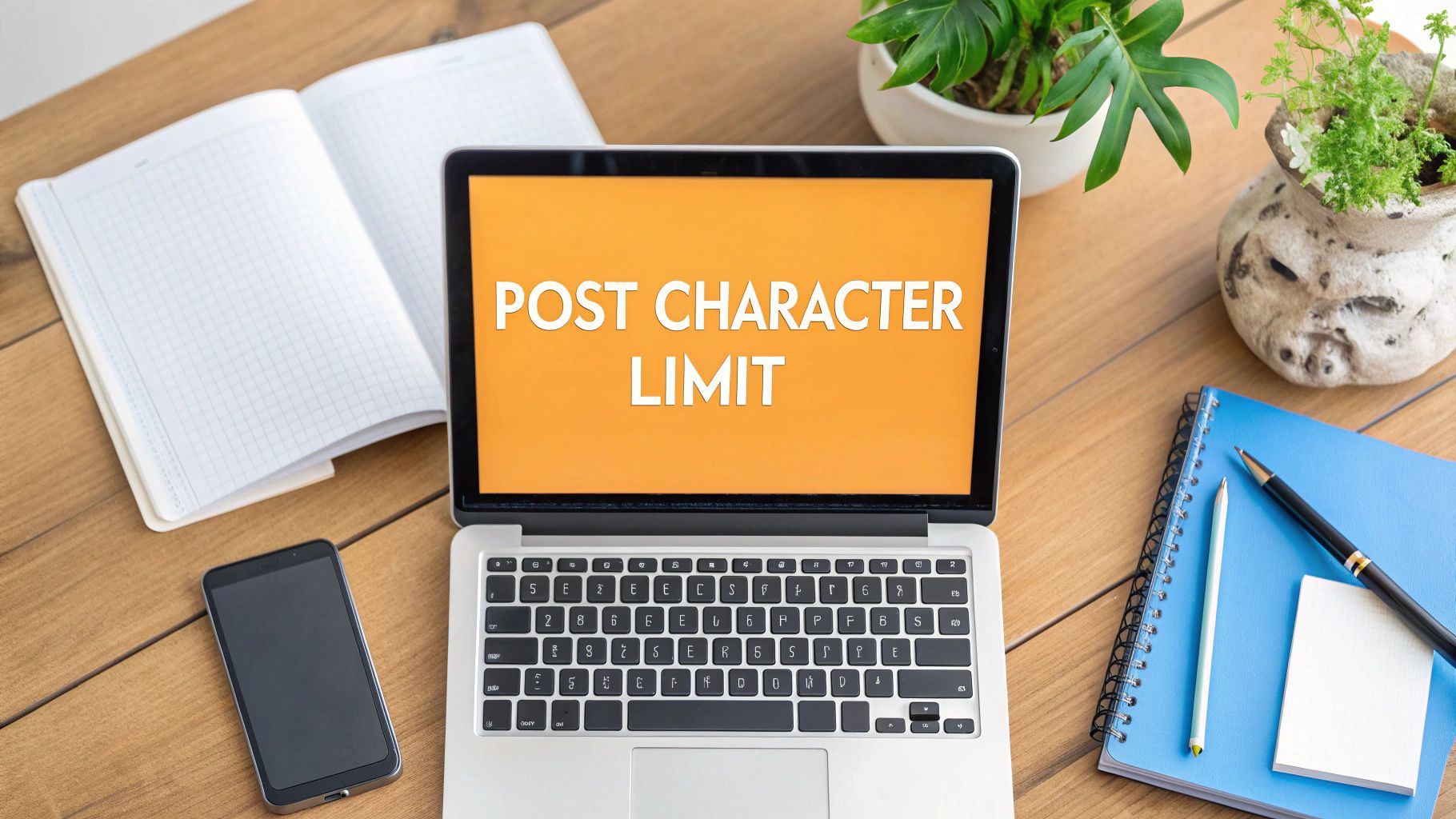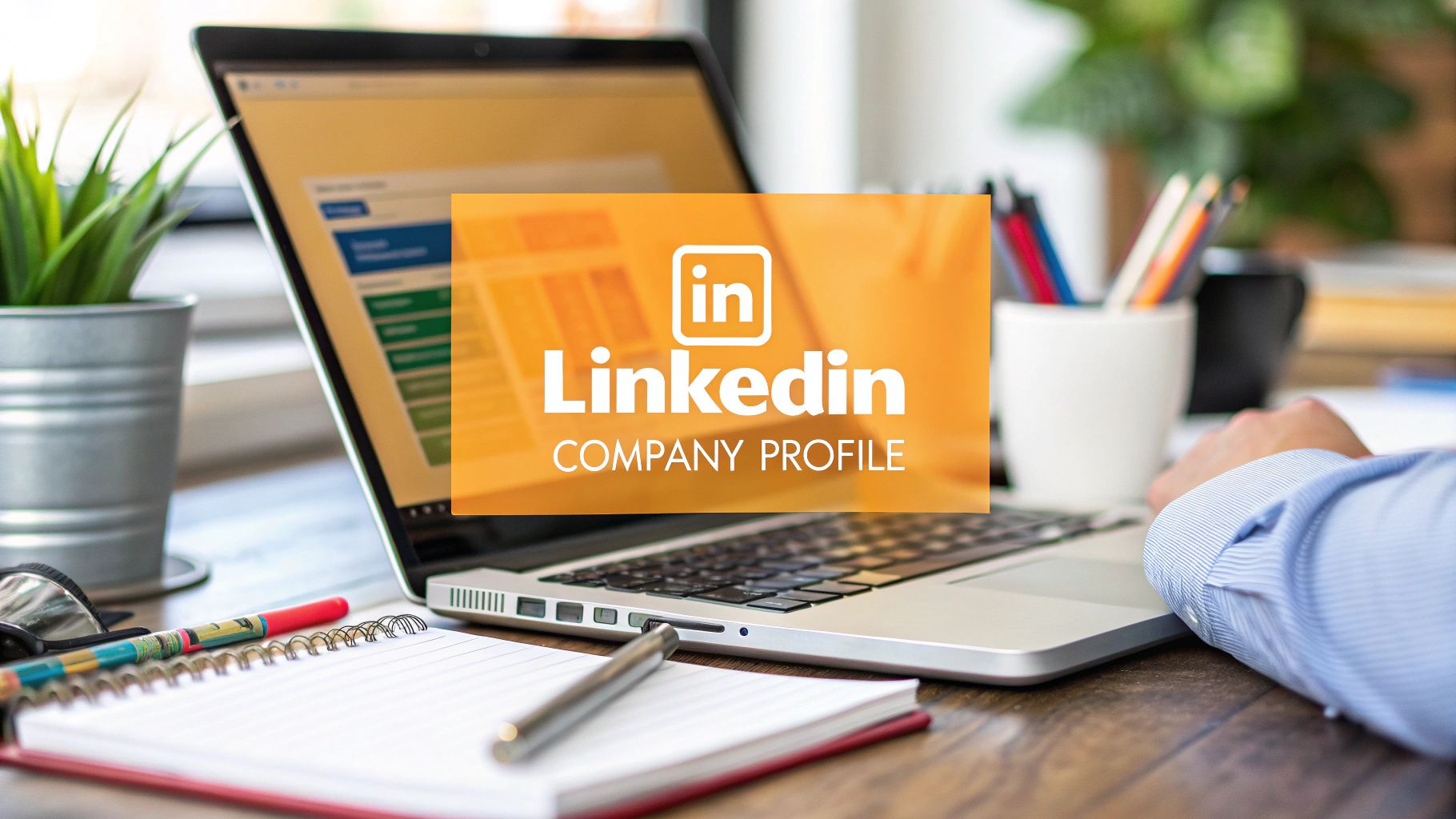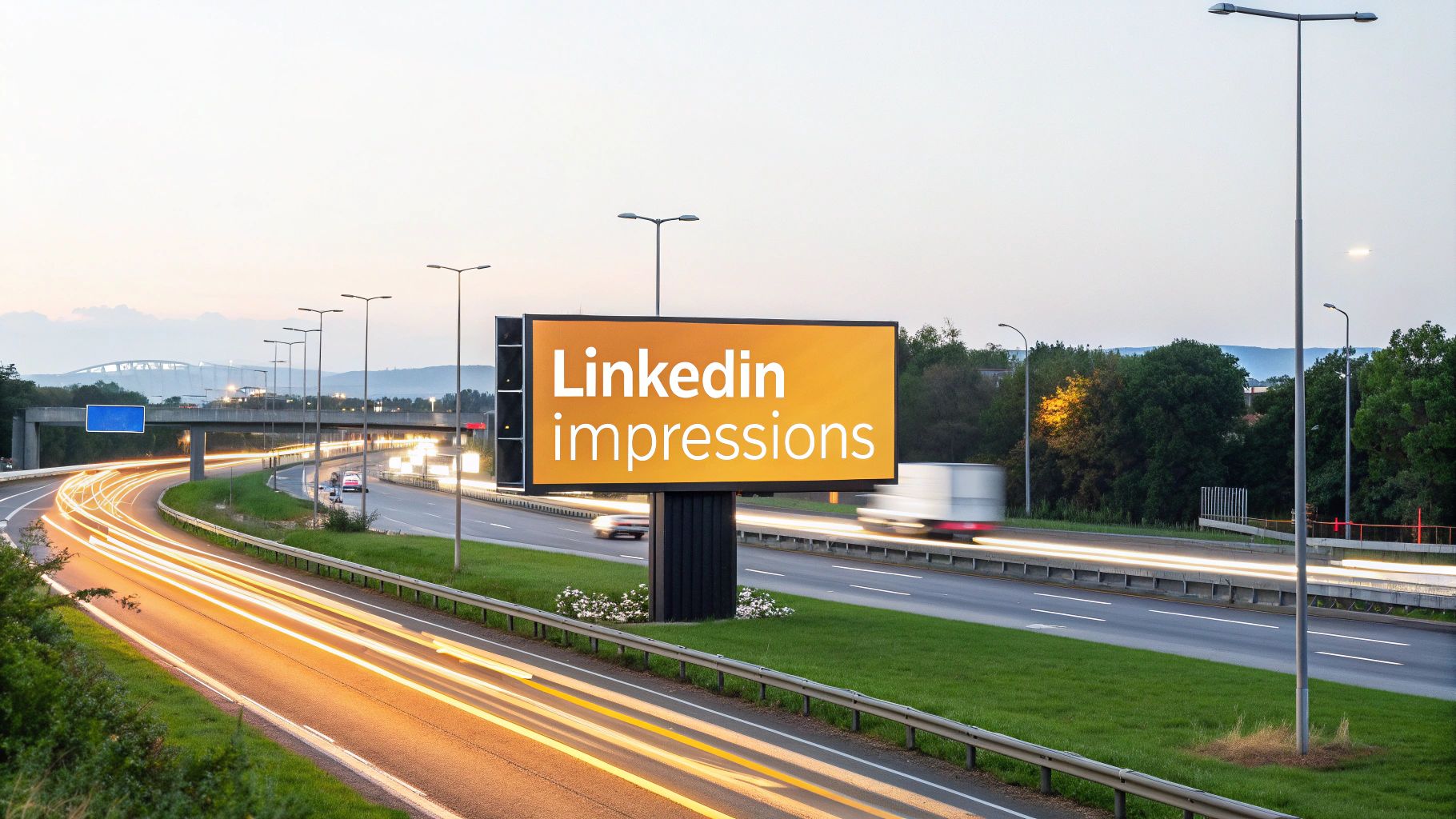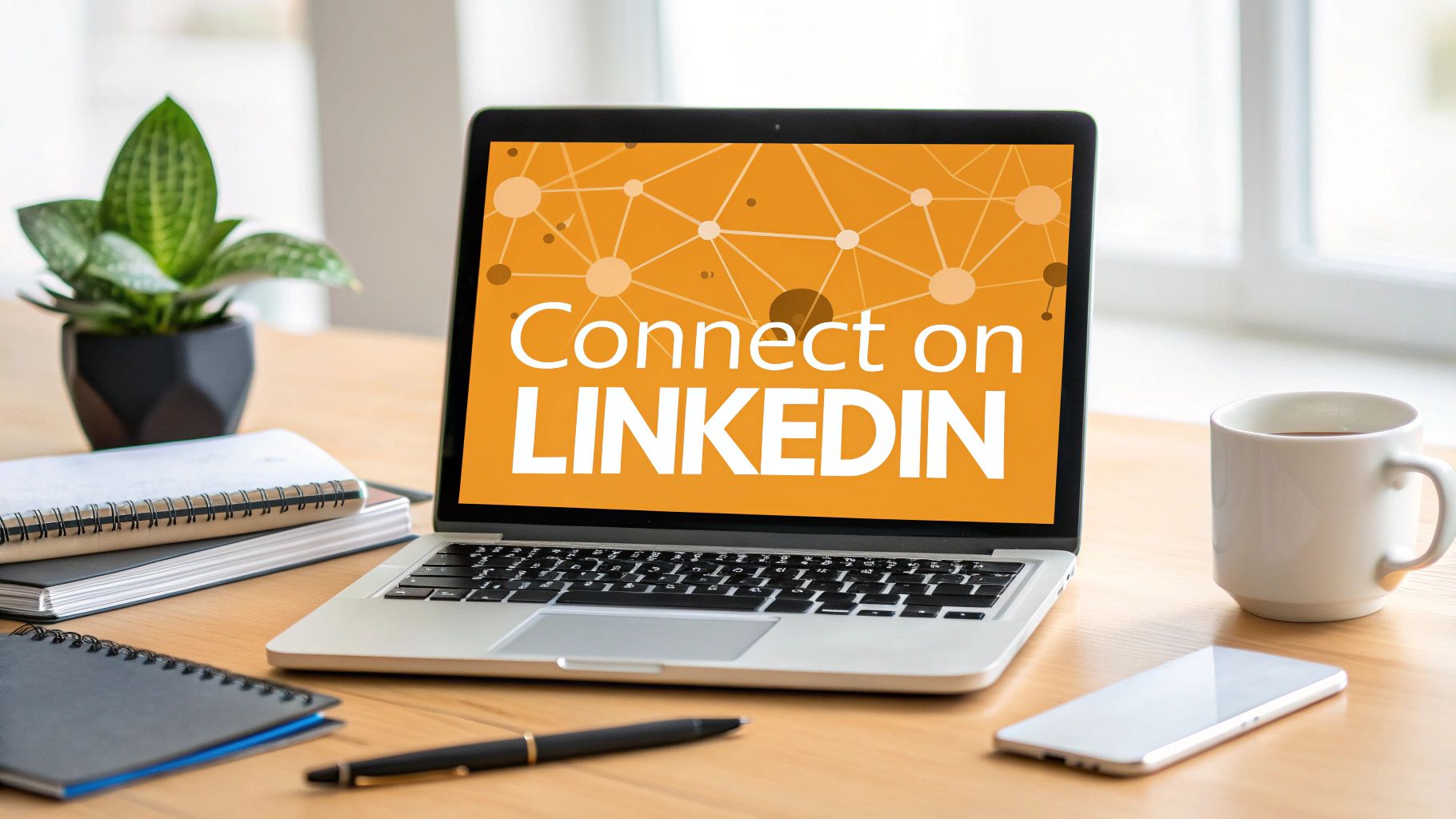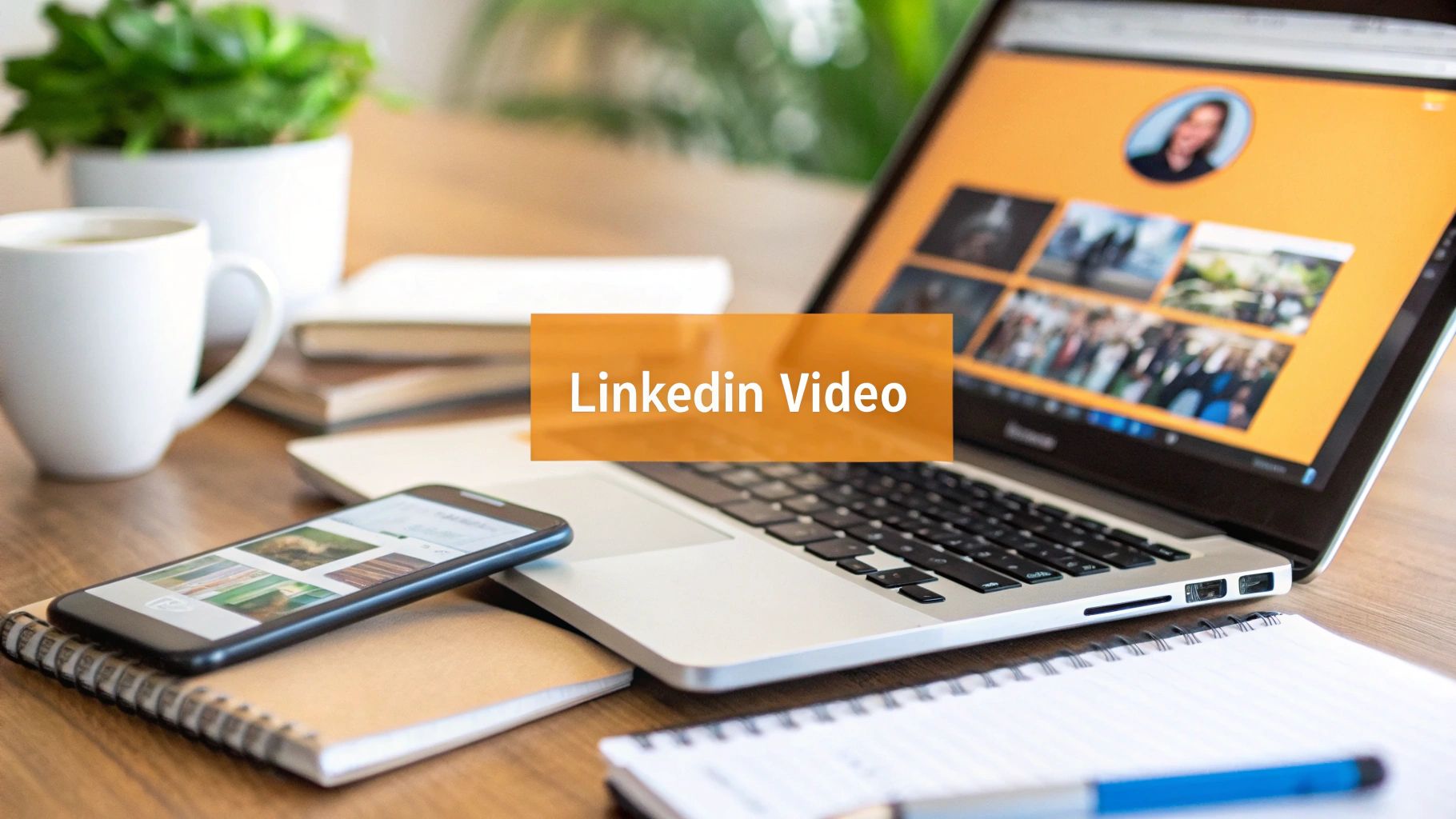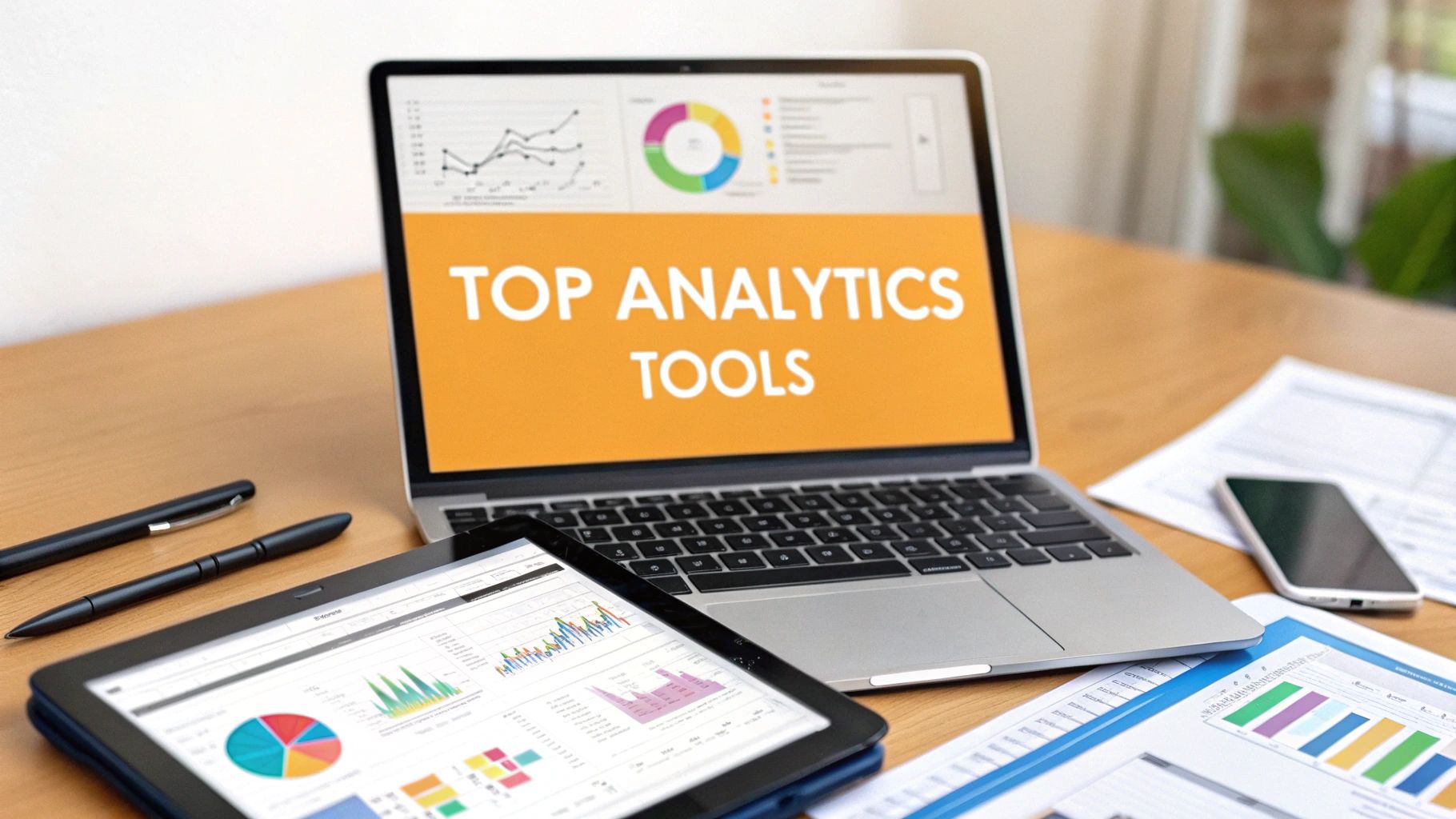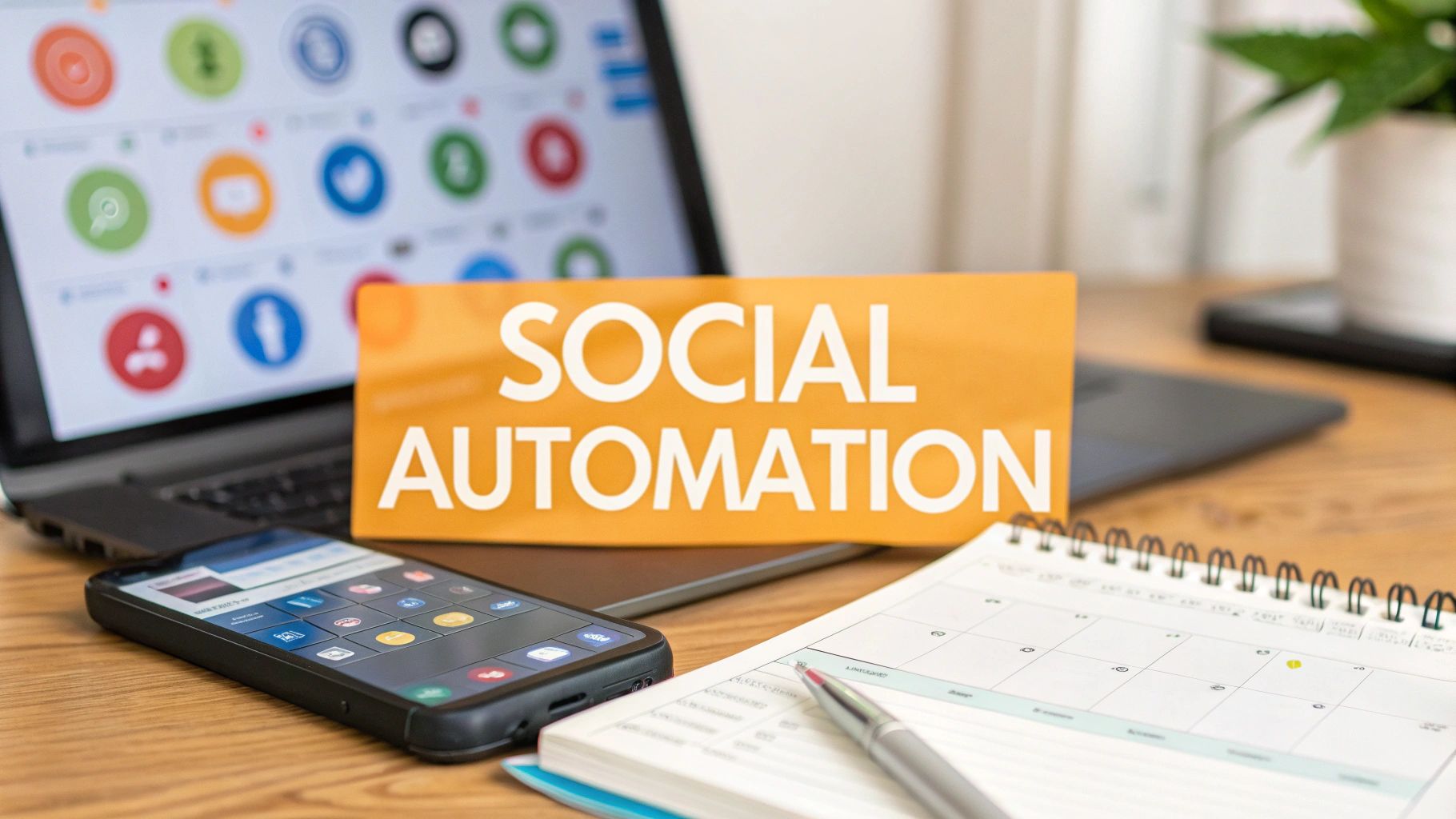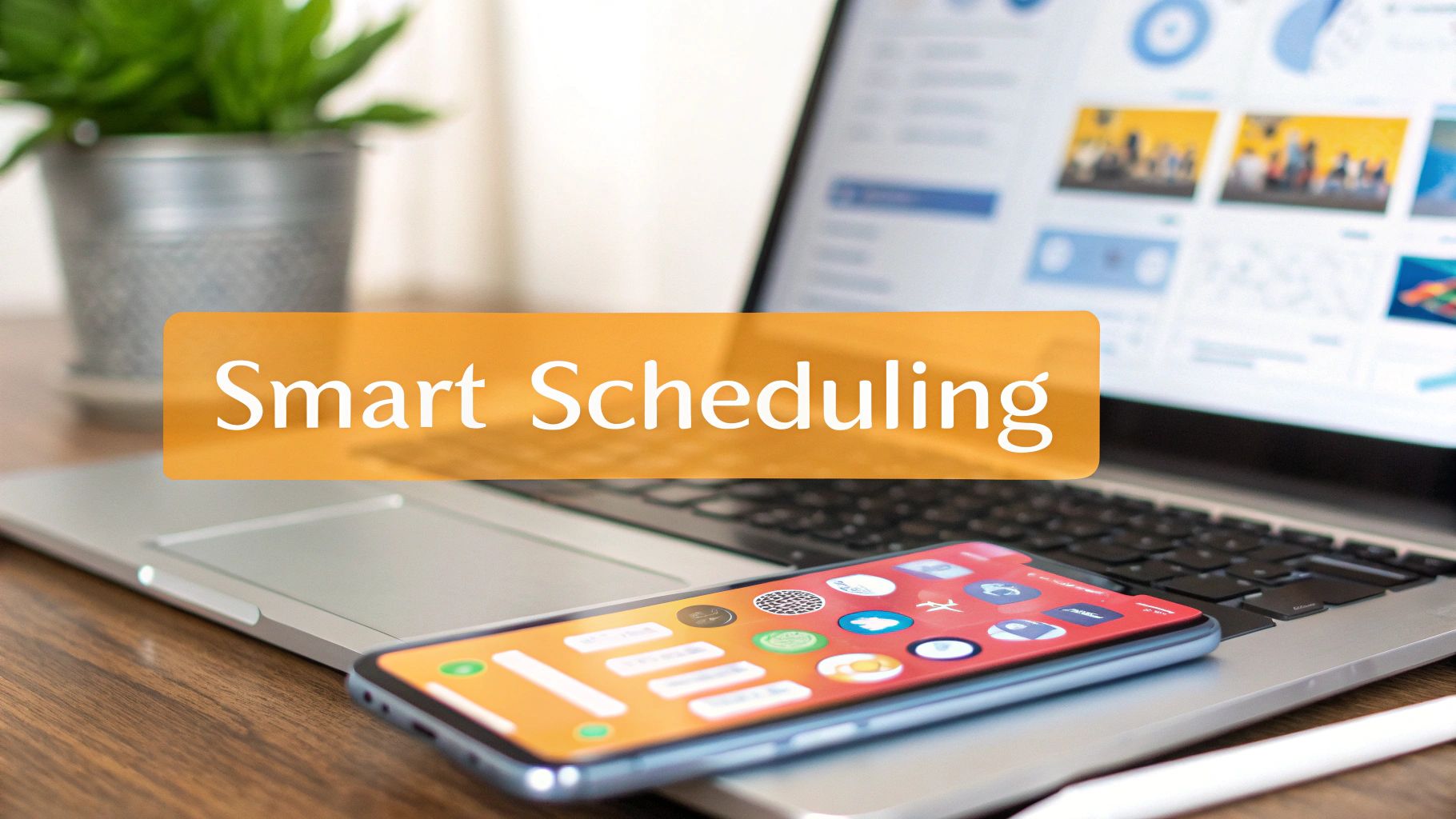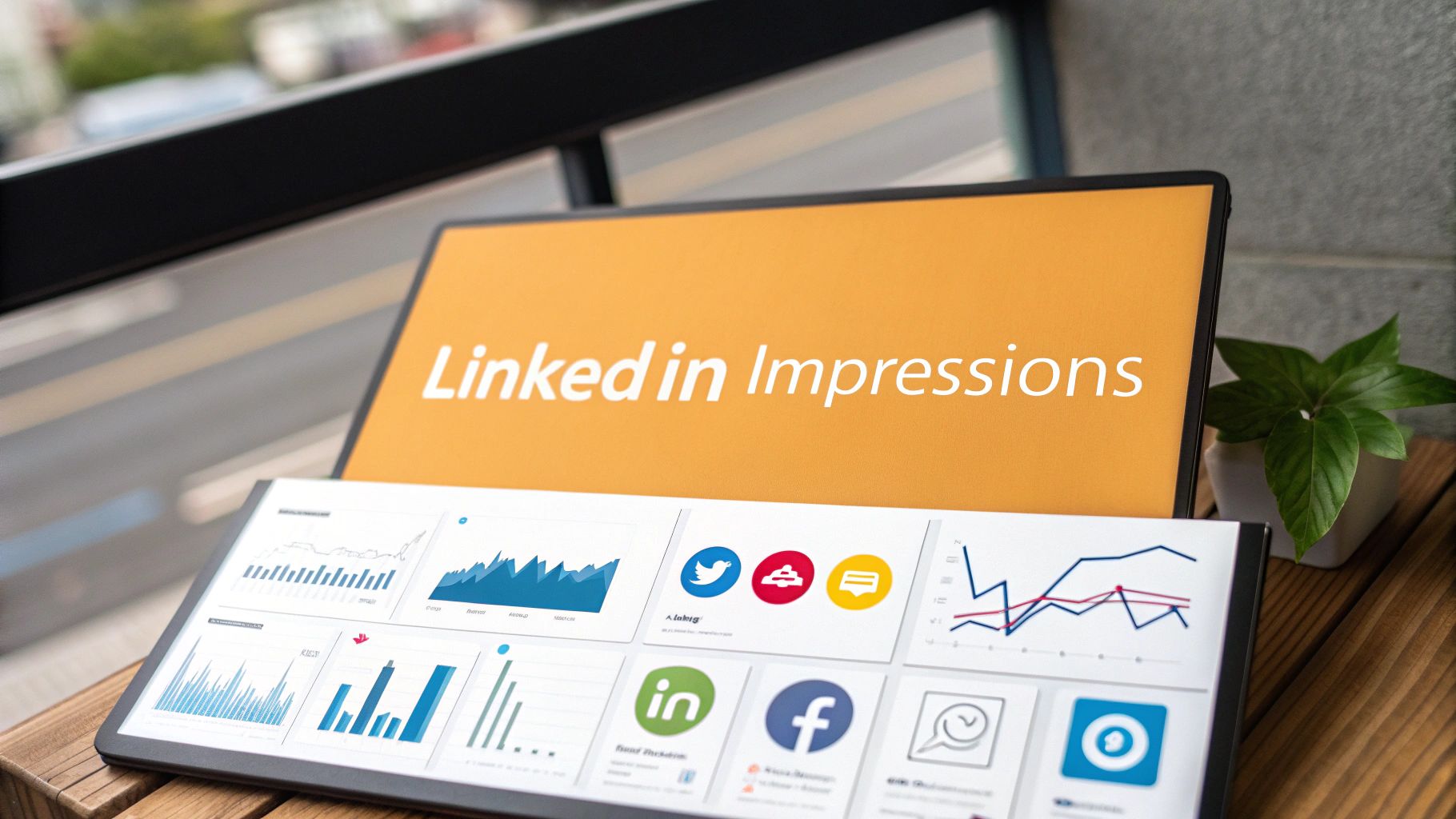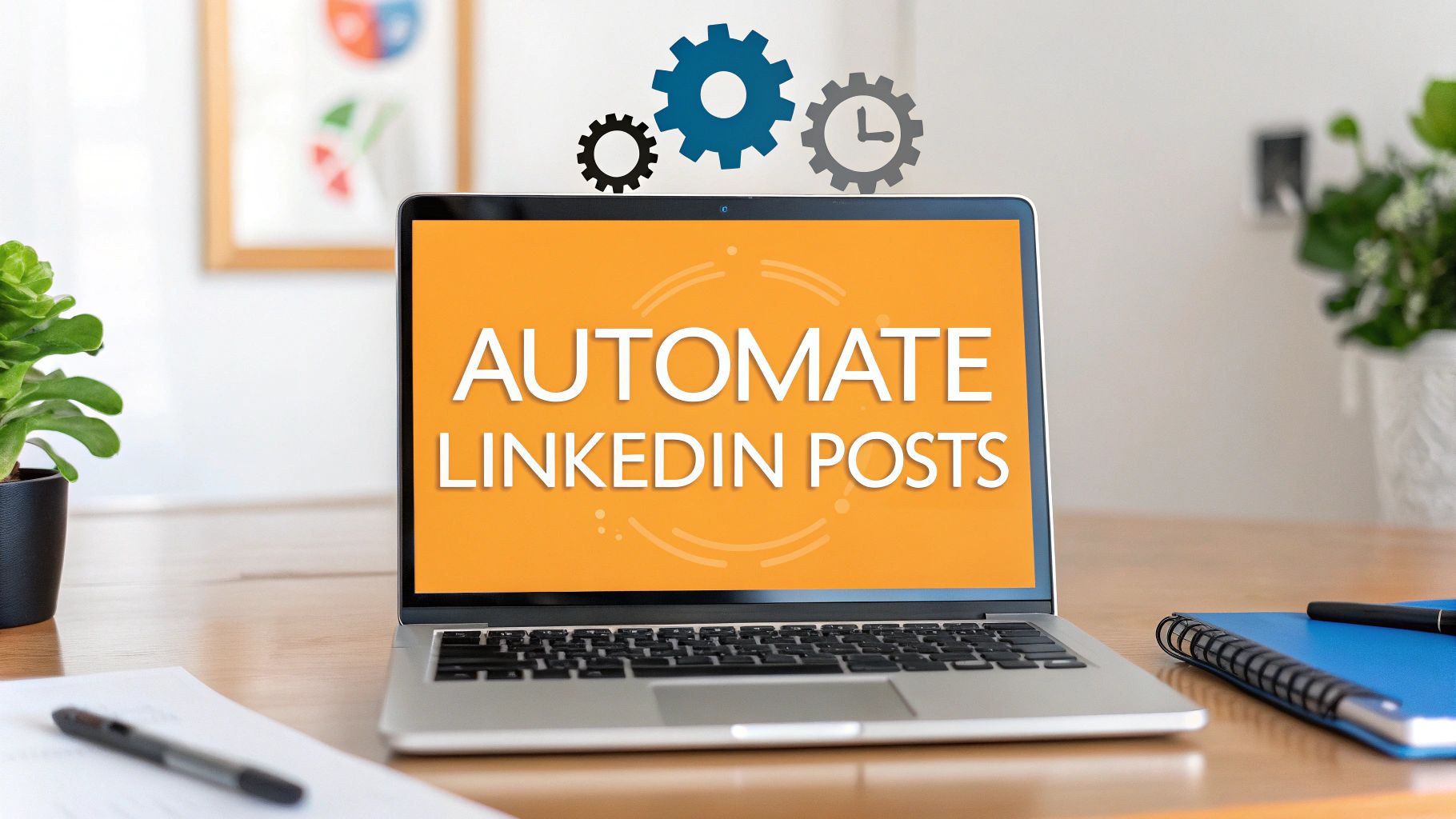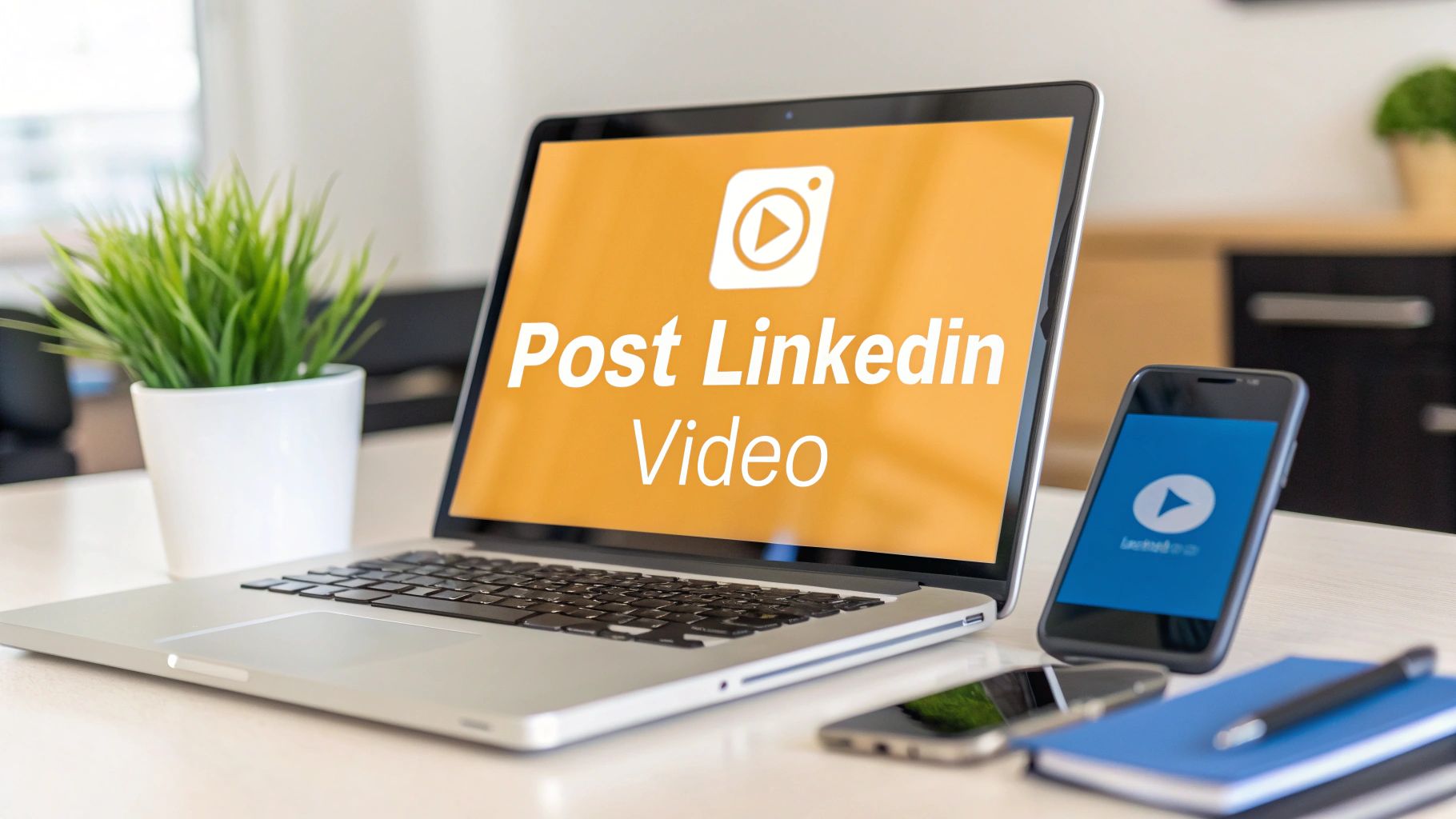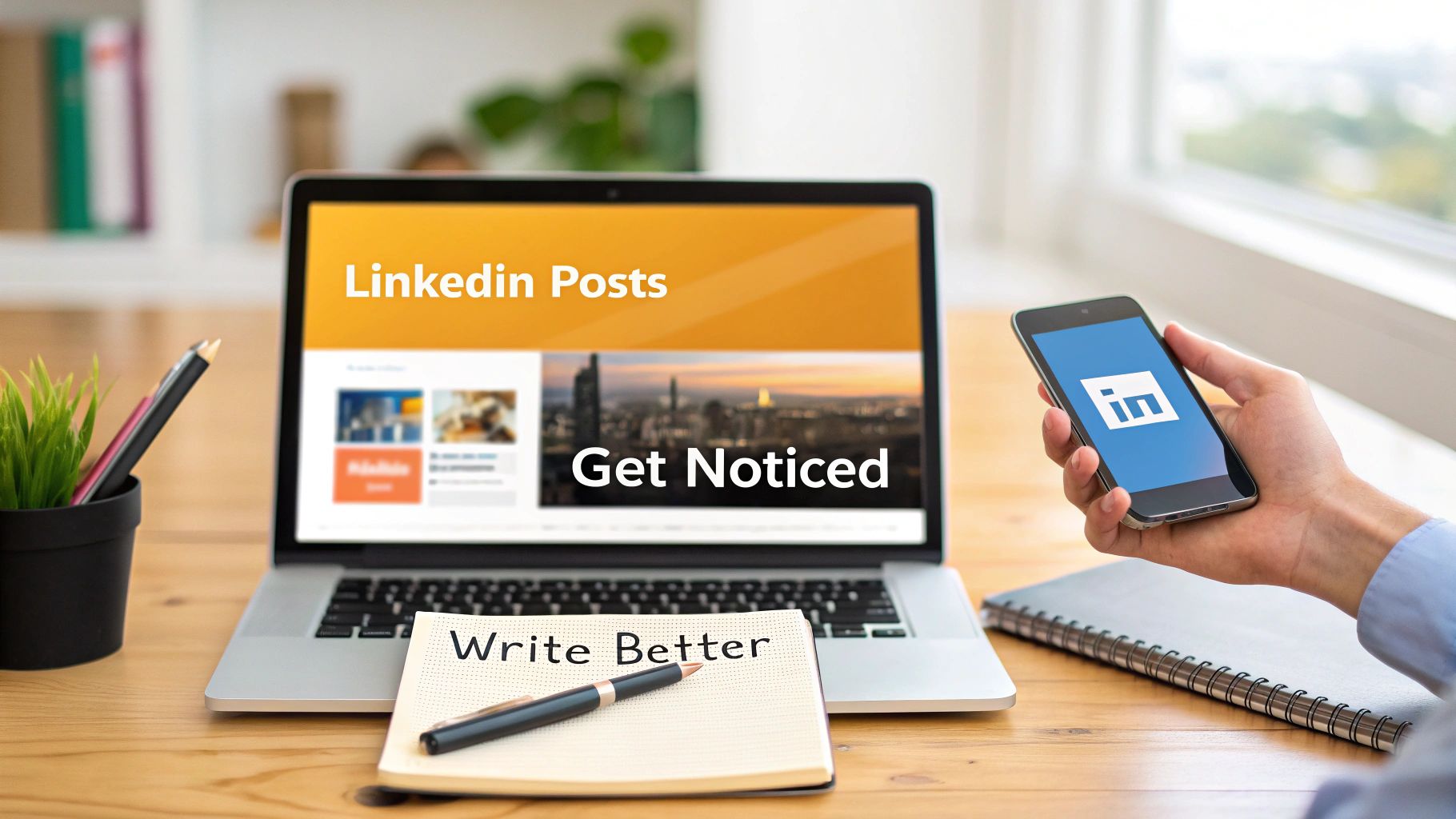It's easy enough to figure out how to ask for a recommendation on LinkedIn. A few clicks and you're done. The real art, though, is understanding why they're such a game-changer for your career. A well-written recommendation isn't just a nice compliment; it's powerful social proof that validates your skills and turns your profile into a story of proven professional value.
The Real Value of a Great LinkedIn Recommendation

While the button to request a recommendation is easy to find, the impact of what you get back goes way beyond the simple interface. You're not just collecting digital kudos; you're building a narrative.
Think about it: a strong recommendation acts as a third-party endorsement. It takes your skills section—which is essentially just a list of things you say you can do—and transforms it into a set of abilities vouched for by managers, colleagues, and clients who’ve seen you in action. This isn’t a vanity metric. It provides real, tangible career advantages, especially when the job market is tight. These testimonials build instant trust and give you an edge.
Why Recommendations Give You a Competitive Edge
I like to think of a LinkedIn profile as a personal storefront. Your experience and skills sections are the products on the shelf. The recommendations? They're the glowing customer reviews that convince a recruiter to invest in you. They offer a depth of context and credibility that a one-line bullet point on a resume just can't match.
A great recommendation is also a huge piece of your personal brand. You can explore proven strategies for building your brand to make sure every part of your profile, including your recommendations, is sending the right message. For a hiring manager sifting through countless profiles, a compelling story from a former boss can be the one thing that gets your profile moved from the "maybe" pile to the "must interview" list. Our guide on LinkedIn profile optimization has more on making every single section pull its weight.
The numbers don't lie. With roughly 79% of recruiters saying recommendations are an important factor, they've become a critical piece of the hiring puzzle. It makes sense—candidates with strong, specific recommendations are seen as lower-risk and higher-value.
Choosing the Right People to Endorse You
Let's be real: not all endorsements carry the same weight. The recommendations that truly move the needle are the ones that come from people who can tell a genuine, specific story about what you brought to the table.
So, before you even think about how to ask for a recommendation on LinkedIn, your first step is to be a bit of a strategist.
Think quality over quantity, always. One detailed endorsement from a manager who saw you lead a project from start to finish is infinitely more powerful than five vague compliments from people you barely worked with. Start by looking through your network for the people whose opinions really matter for your career goals.
Who Are Your Best Advocates?
Okay, so who should you actually ask? It all comes down to what part of your professional story you want to tell.
- Former Managers: These are your heavy hitters. They can speak to your work ethic, your performance, and how you fit into the bigger picture—all things recruiters love to see.
- Direct Colleagues: A teammate you were in the trenches with on a tough project can give a real, ground-level view of your problem-solving skills and how you collaborate. They saw it firsthand.
- Clients or Customers: If you’re in any kind of client-facing role, a rave review from a happy customer is pure gold. It’s undeniable proof that you deliver results.
Think about your relationships. LinkedIn has blown past 1 billion users, with a huge chunk of them being Millennials and Gen Z. This just means your network is a goldmine of potential advocates who get how valuable the platform is. If you're curious, you can check out more amazing LinkedIn statistics to see the sheer scale.
Pro Tip: Focus on what's recent and relevant. A recommendation from a manager you worked with last year on a project that mirrors the jobs you're applying for? That's the jackpot. An endorsement from a job you had ten years ago just won't have the same impact.
Your goal here is to get a list of people who can do more than just say you're "great to work with." You want the person who can write, "Her new campaign strategy was directly responsible for a 15% jump in our Q3 leads." That’s the kind of specific detail that makes a recommendation actually work for you.
How to Write a Request People Want to Answer
Let's be honest: that generic, one-click LinkedIn request is digital junk mail. We’ve all gotten them, and we’ve all ignored them. To get a thoughtful recommendation, you need to send a thoughtful message that shows you respect the other person's time.
The trick is to remove all the guesswork. Don't make them rack their brain trying to remember every awesome thing you did. You need to hand them the key details on a silver platter.
Frame Your Request for a Quick “Yes”
Your message needs to be short, sweet, but full of helpful context. Kick things off with a warm, friendly opener that reminds them how you know each other—skip the stiff, formal greetings.
Next, jog their memory with a specific, positive moment. Instead of a vague, "We worked together at Acme Inc.," try something like, "I'll always remember how we pulled off that Q4 product launch together under that crazy deadline." This instantly brings a shared success to mind and gives them a great starting point.
When you get specific, you're showing them you've put real thought into why you're asking them, which is a huge sign of professional respect.
This infographic breaks down how to shape your ask to get the best results.
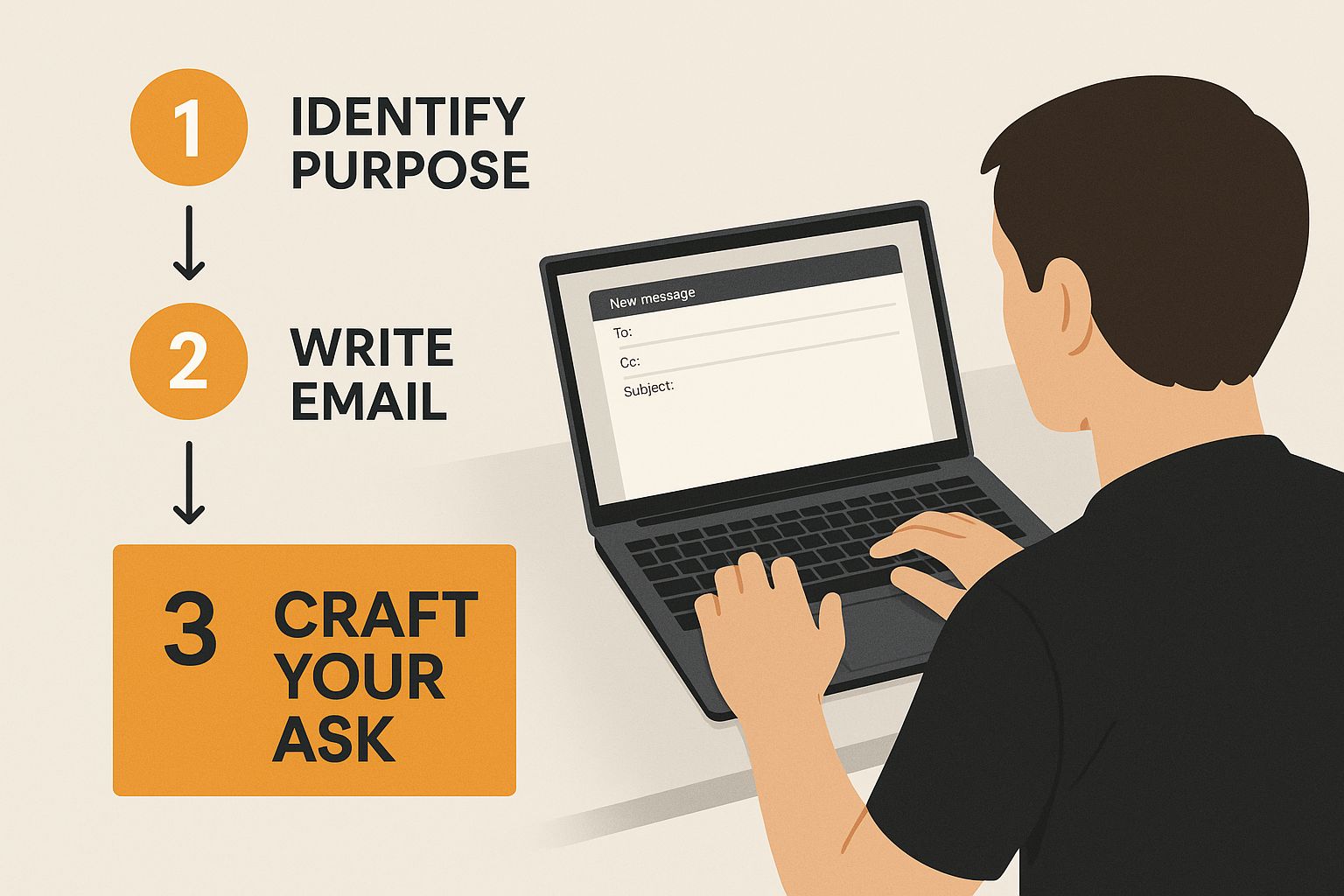
As you can see, the goal is to move from a generic ask to a request that’s loaded with helpful context.
Make It Incredibly Easy for Them to Say Yes
This is the most important part. People are busy. A blank text box can feel like a homework assignment they didn't ask for. Your job is to make it as easy as possible for them to write something fantastic.
Here’s a simple checklist:
- Share your goal: Tell them why you're asking. "I'm applying for a new Senior Project Manager role and a recommendation from you would be a huge help." This gives them a clear lens to write through.
- Suggest specific skills: Gently guide them. For example, "If you're comfortable, it would be amazing if you could touch on my skills in team leadership and data analysis from the Phoenix project."
- Offer a starting point: This is a pro move. You can offer to send over a few bullet points for them to use or adapt. It's not cheating; it's a courteous way to save them a ton of time.
A great request feels less like a demand for a favor and more like a collaboration. By giving them context and specific prompts, you're not telling them what to write—you're helping them write a better, more accurate recommendation with way less effort.
Here are a few templates you can adapt depending on who you're asking.
Recommendation Request Message Examples
These are just starting points! Feel free to mix, match, and inject your own personality to make them sound like you.
| Contact Type | Key Message Points | Sample Opening Line |
|---|---|---|
| Former Manager | Remind them of a key project, mention specific skills you learned from them, and state your current career goal. | "Hi [Name], hope you're doing well! I was just thinking about the [Project Name] we worked on and how much I learned from your leadership." |
| Close Colleague | Recall a shared success or a funny memory, highlight a collaborative skill they witnessed, and offer to return the favor. | "Hey [Name]! Remember when we had to tackle that [Client/Problem]? I was hoping you could help me out with something." |
| Client or Vendor | Reference the successful outcome of your work together, mention the value you provided, and politely explain how their testimonial helps. | "Hi [Name], it was such a pleasure working with you on [Project/Initiative]. Your team's success was a real highlight for me that year." |
The core principles here are similar to the general etiquette of requesting a letter of recommendation, which is another great resource. And while you’re polishing your profile, make sure your posts look just as professional by using a tool like our handy LinkedIn Post Formatter.
When to Time Your Ask for Maximum Impact
On LinkedIn, timing isn't just a small detail—it's a massive part of getting a 'yes.' Sending a request at the right moment can be the difference between an enthusiastic, thoughtful response and your message getting buried in a busy inbox.
You want to ask when your value is fresh in their mind. This makes your request feel like a natural next step, not just another task on their to-do list.
Capitalize on Key Career Moments
Certain moments are just perfect for asking. They create a natural window where people are already thinking about your great work.
- Right After a Big Win: Just wrap up a major project where you knocked it out of the park? Now's the time to ask your manager or key teammates while that shared success is still buzzing.
- When You're Leaving a Job (on good terms!): During your last week, your contributions are top of mind. It’s an ideal time to capture that positive sentiment before you walk out the door.
- The Moment You Get Great Feedback: If your boss gives you a glowing review in a one-on-one or a client sends a happy email, that's your cue. Thank them, and then ask if they’d be willing to share a version of that feedback as a recommendation.
Play the Clock: Hit Them During Peak Hours
Beyond specific events, think about when your contact is most likely to actually be on LinkedIn. Sending your request during peak hours seriously increases the odds it gets seen right away.
It's all about striking while the iron is hot. Research on connection requests from botdog.co found that a whopping 63% of acceptances happen within the first day.
Sure, that data is for connection requests, but the principle is exactly the same. A message sent when someone is already scrolling and engaging is far more likely to get a quick response.
Want to get even more specific? We break down all the peak engagement windows in our complete guide on ideal LinkedIn posting times. Aligning your ask with these times is a simple trick that can give you a real edge.
The Art of the Follow-Up and Showing Gratitude

So, you’ve sent your personalized request. Now for the hard part: the waiting game. It's easy to assume the worst, but the reality is that people are busy. Your well-crafted message can simply get lost in a sea of emails and notifications.
That's why a gentle follow-up isn't just okay—it's often necessary. Give them about a week. After seven days, a short, friendly reminder is completely appropriate. Don’t overthink it. Something as simple as, "Hey [Name], just wanted to quickly check in on my recommendation request from last week. No pressure at all if you're swamped!" works perfectly.
After You Get the Recommendation
When that glowing recommendation finally lands on your profile, your job isn't quite done. This is your chance to close the loop with genuine gratitude and solidify the relationship.
- Send a Private Thank You: Don’t just let the notification do the work. Shoot them a quick, personal message right away. "Thank you so much for taking the time to write that recommendation for me. I truly appreciate your kind words about our work on [Project Name]!" goes a long way.
- Offer to Return the Favor: This is a real pro move. End your thank-you note by offering to write one for them in return. It transforms a one-sided ask into a two-way street, turning a simple transaction into a meaningful professional exchange.
A recommendation is a gift of someone’s time and reputation. A thoughtful follow-up and a sincere thank you are non-negotiable. It reinforces your professionalism and ensures that person will be happy to help you again in the future.
Answering Your Top Questions About LinkedIn Recommendations
Asking for a recommendation on LinkedIn can feel a little awkward, and it's easy to get tripped up by the details. Let's tackle some of the most common questions that pop up.
What if I Get a Recommendation That’s Not Quite Right?
It happens more often than you think. You get a recommendation, and while you appreciate the effort, it has a typo or misses the key skill you were hoping they’d mention. Don't sweat it.
LinkedIn actually lets you ask for edits before it goes live on your profile. You can send a quick, private message back to your contact.
Always lead with gratitude. Then, gently nudge them in the right direction. Try something like, "Thank you so much for this thoughtful recommendation! I really appreciate you taking the time. If you were open to it, would you mind adding a quick mention of my work on the Atlas project? That context would be super helpful."
Most people are more than happy to make a quick tweak. This way, you get a recommendation that truly helps your career, and no one feels put on the spot.
How Many Recommendations Should I Have on My Profile?
This is one of those areas where quality absolutely crushes quantity. Two or three specific, glowing recommendations from recent jobs are worth far more than a dozen generic ones from a decade ago.
Think of it as building a highlight reel of your career, told by the people who saw it happen.
- For your current or most recent role: Shoot for 2-3 strong recommendations.
- For your whole profile: A great target is 5-10 high-quality recommendations that cover your most important experiences and skills.
The goal is to get endorsements that include real-world examples of what you can do. One killer sentence about a specific project you nailed will always beat a vague paragraph of empty praise.
Can I Hide a Recommendation After I’ve Accepted It?
Yep, you're in complete control. As you grow in your career, an old recommendation might not reflect who you are or where you're going anymore.
It's easy to manage. Just head to your profile, scroll down to the recommendations section, and you'll see an option to hide any that don't fit your current brand. The recommendation isn't gone forever—it's just hidden from public view. You can always make it visible again later if you want.
Ready to create LinkedIn posts that get as much attention as a great recommendation? RedactAI uses your unique profile and experience to generate high-impact posts in your authentic voice, helping you build a powerful personal brand in minutes. Start creating for free on RedactAI.

